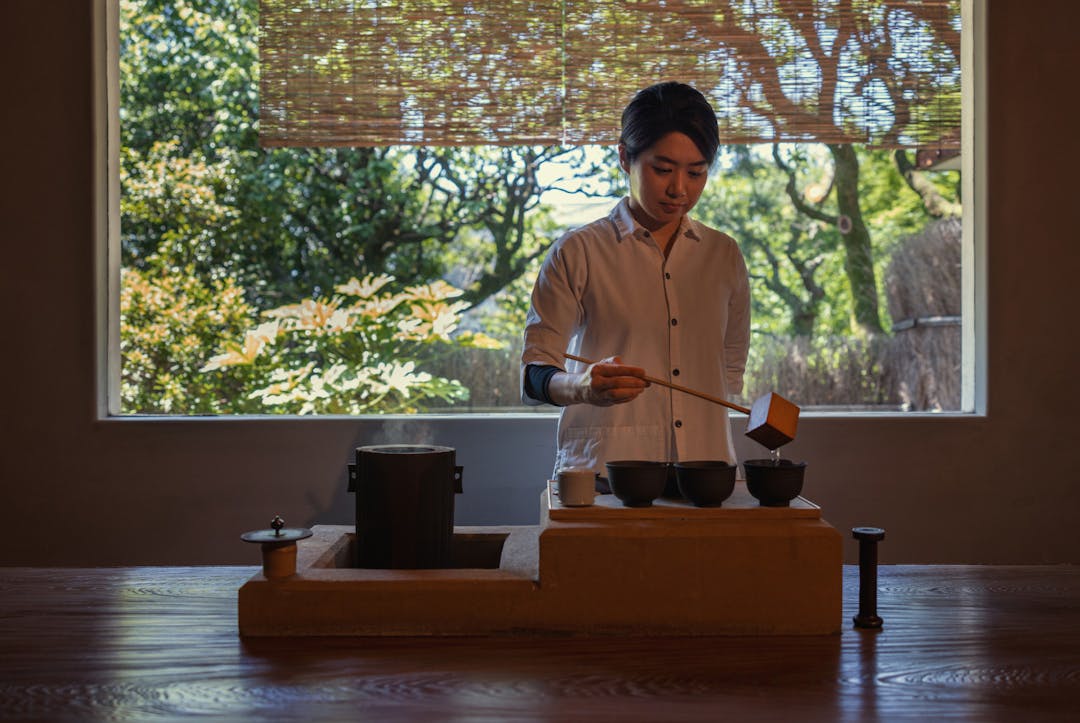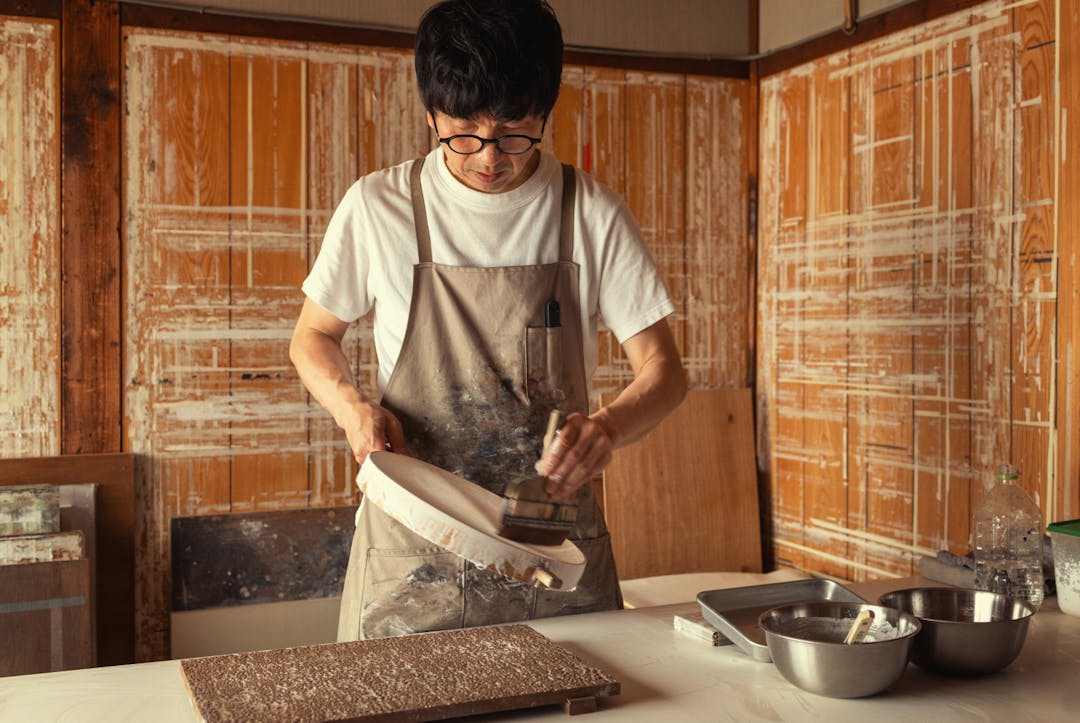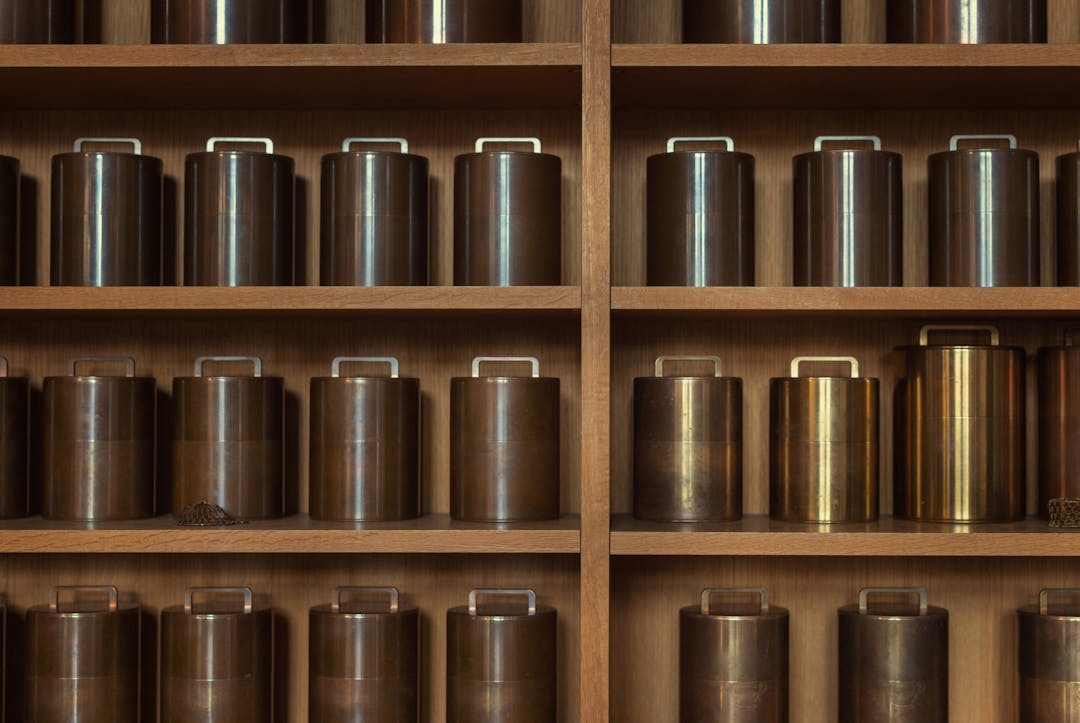
Play Movie
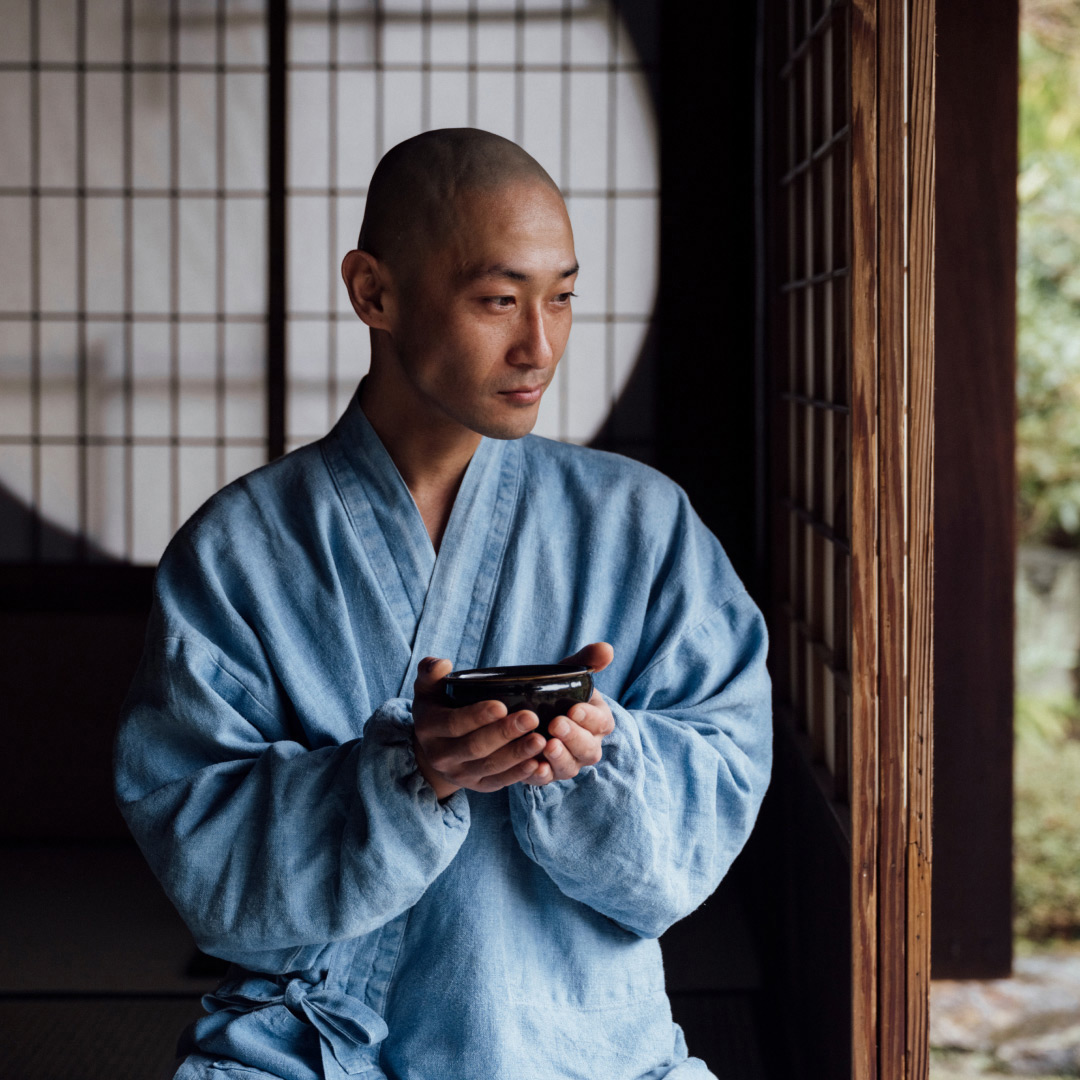
Listen
to Katherine Kennard
reading this story
SILENT STONES OF ZEN
Tosei Shinabe
It’s 10am on a Tuesday morning in Kyoto. Rain is falling in rhythmic streams onto the ancient moss, raked stones and curved roof tiles of Ryosokuin, a centuries-old Zen Buddhist temple.
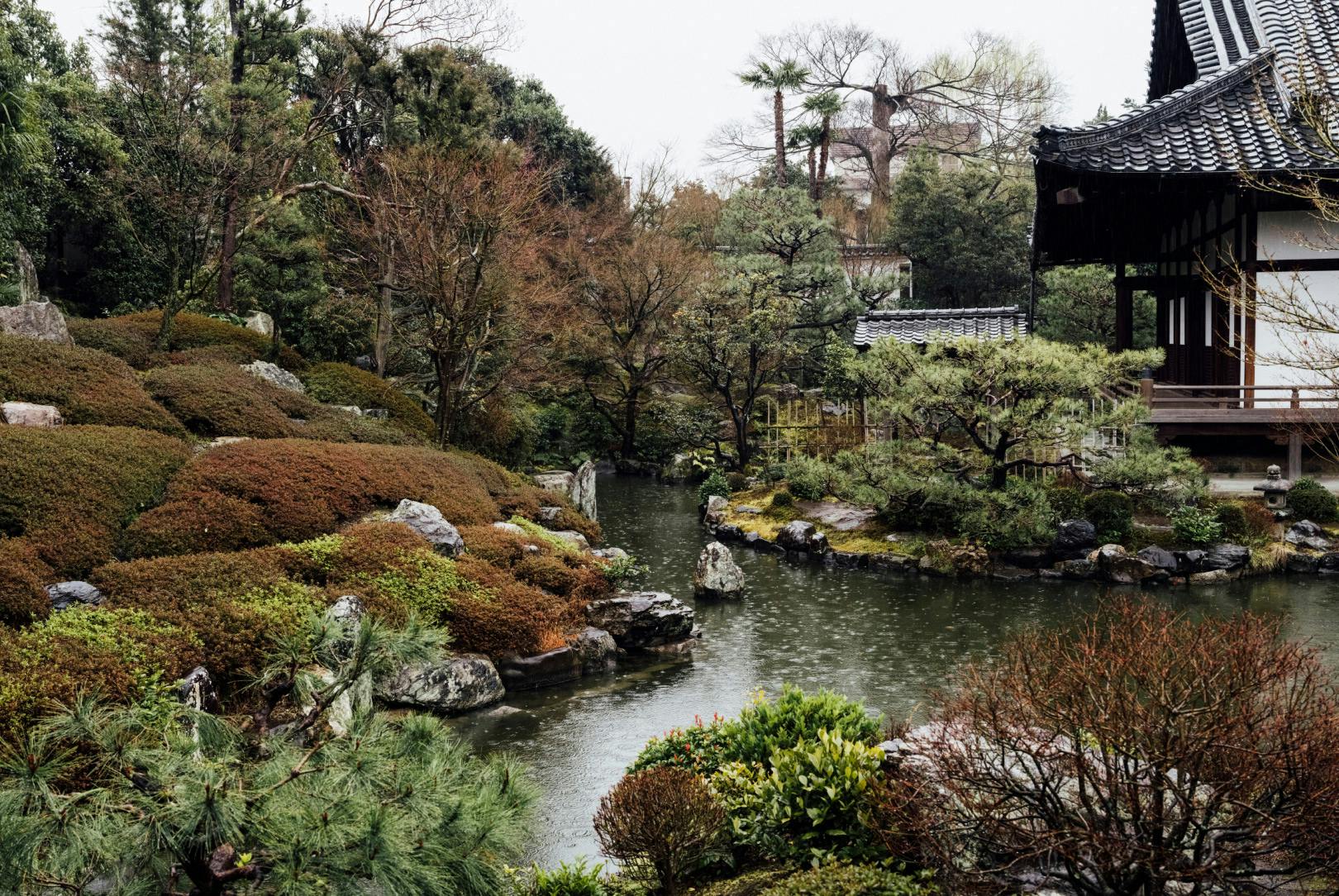
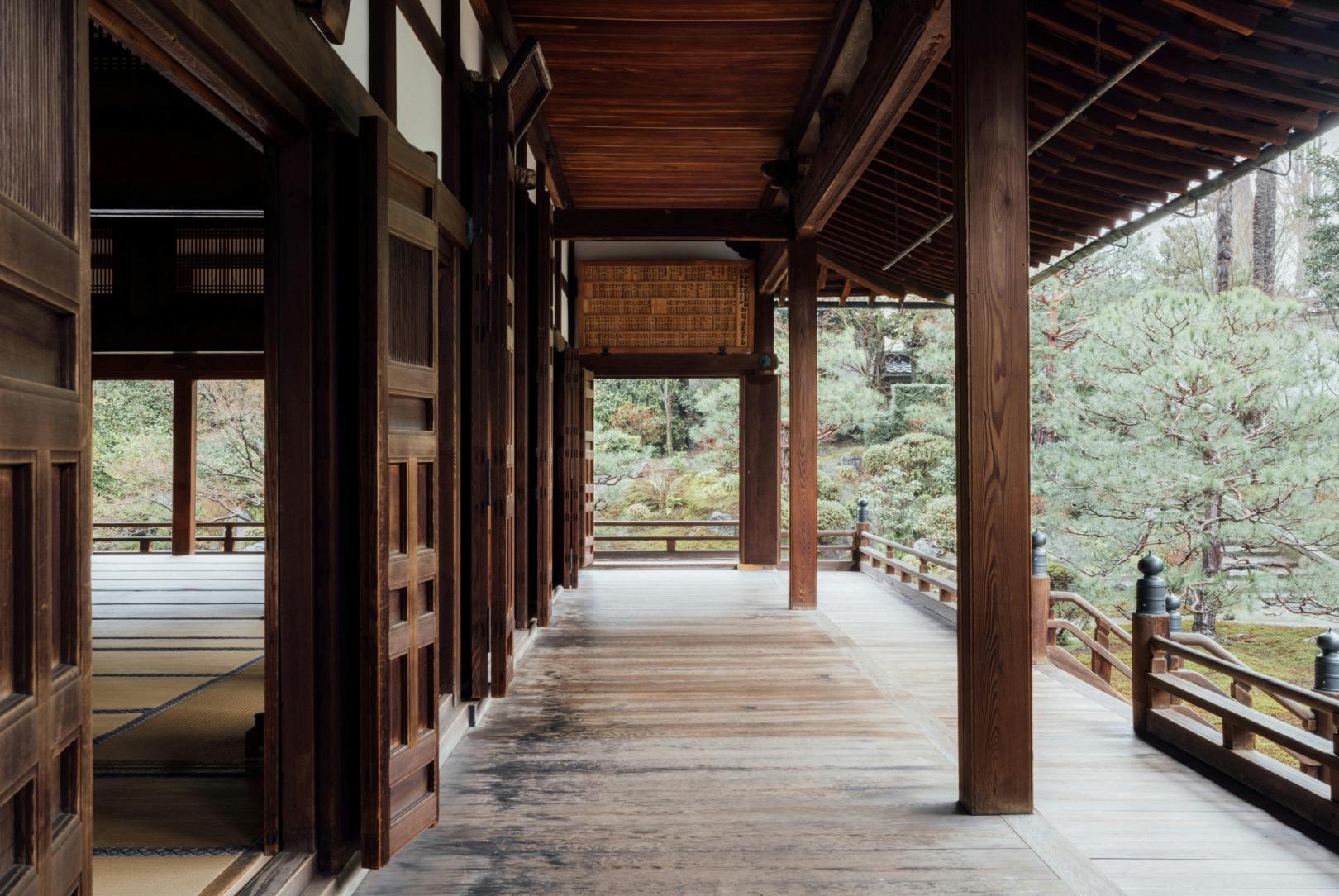
A network of open walkways – wood creaking underfoot with the layered stories of its past, rain-sprayed winds blurring inside and outside – leads to a large room. Timelessly minimal in its near-emptiness, it has woven tatami flooring, paper screens and simple calligraphic scrolls on earthen walls, the chill air warmed by a softly hissing heater. Countering the simplicity of this space is the painterly richness of the view. A wall of windows is pulled back to frame, with haiku-perfect precision, the gardens: we see a dreamily serene sweep of pond, fringed with the stencilled lines of maple trees, fallen camellia petals, intricate moss surfaces and a teahouse, as the raindrops create eternal circles on its surface.
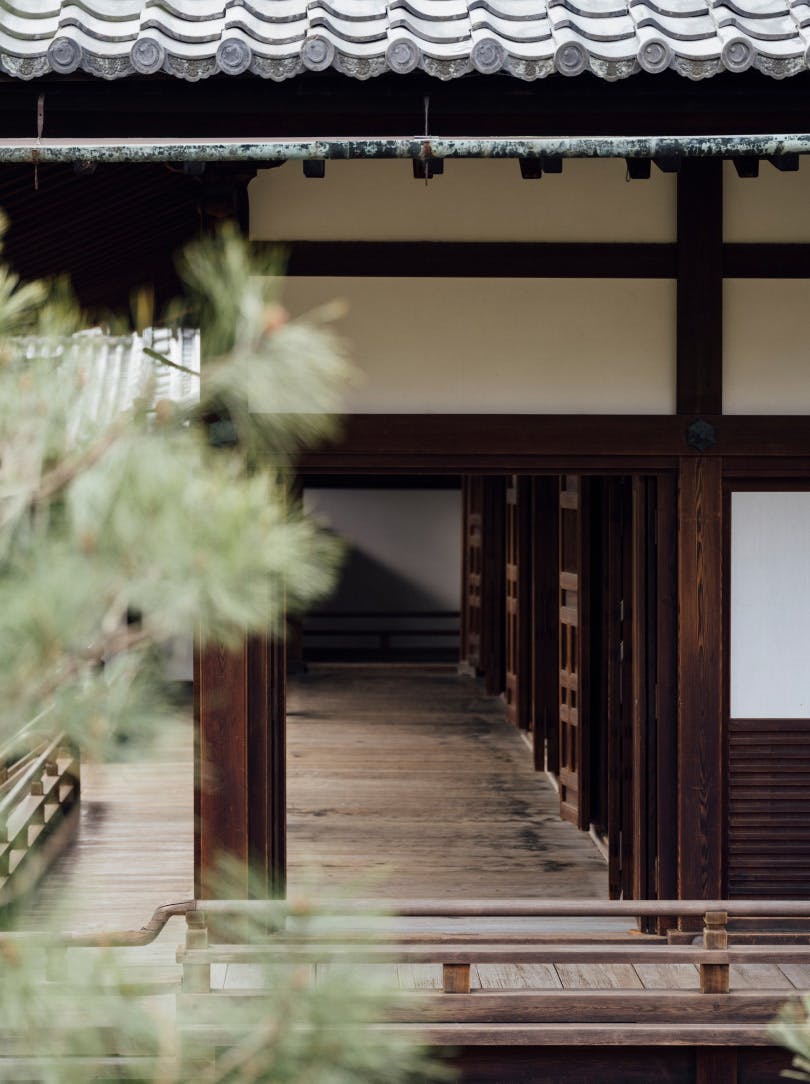
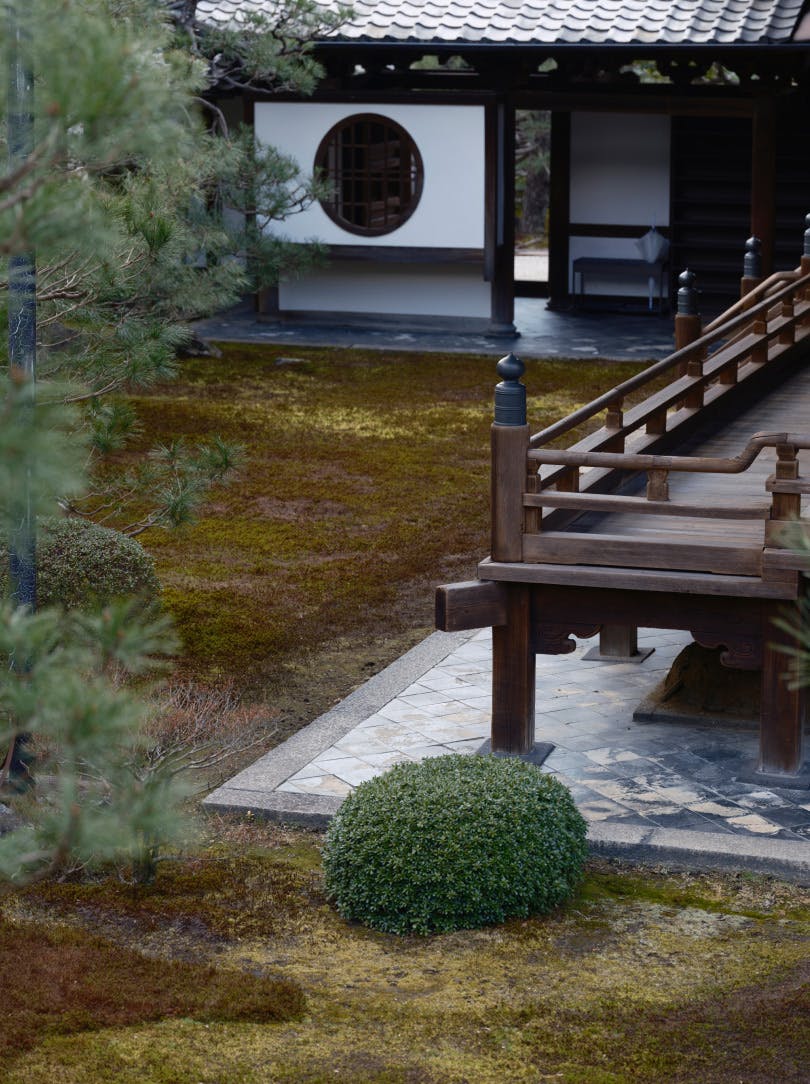
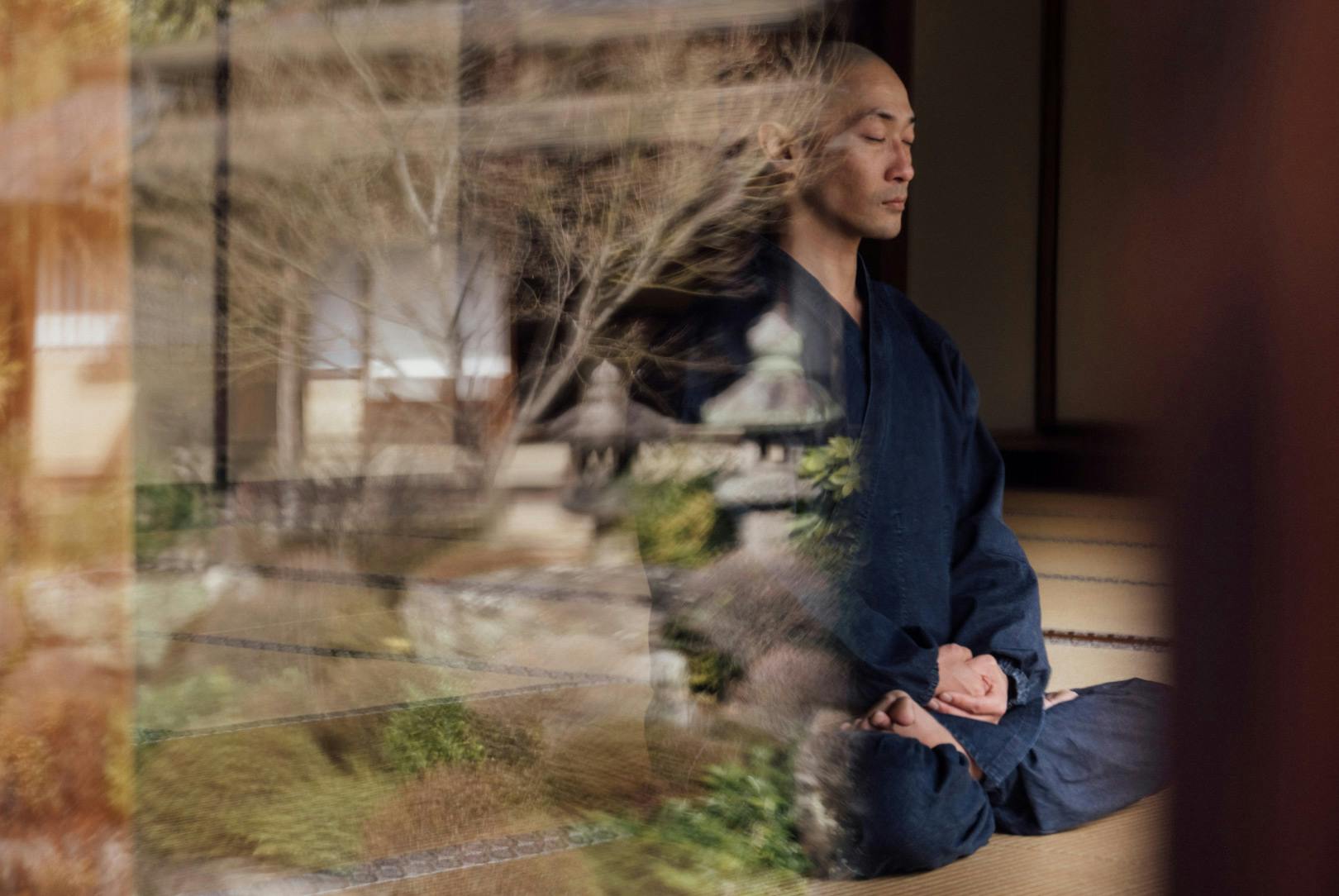
In the stillness of this room, our gaze falls upon a solid rectangular wood tray sitting on the empty floor. It contains something even more distracting than the garden views: a family of stones, wrapped in intricate threads of woven hemp. Connected yet unique, each of the five stones possesses a singular primitive beauty, from the raw material form in terms of their shape, size, palette and texture – to the woven hemp fastenings. One warrior-like stone has a deep, black surface and a softly round shape, with thick, woven earthy threads loosening above it into a powerful cascade of shiny blonde hairs, evoking a samurai edge. Another stone is soothingly calm, with a minimalist ovoid shape and smooth matte surface of monotone grey, its clean-lined form contained in super-thin, light threads with a sharp vertical tuff.
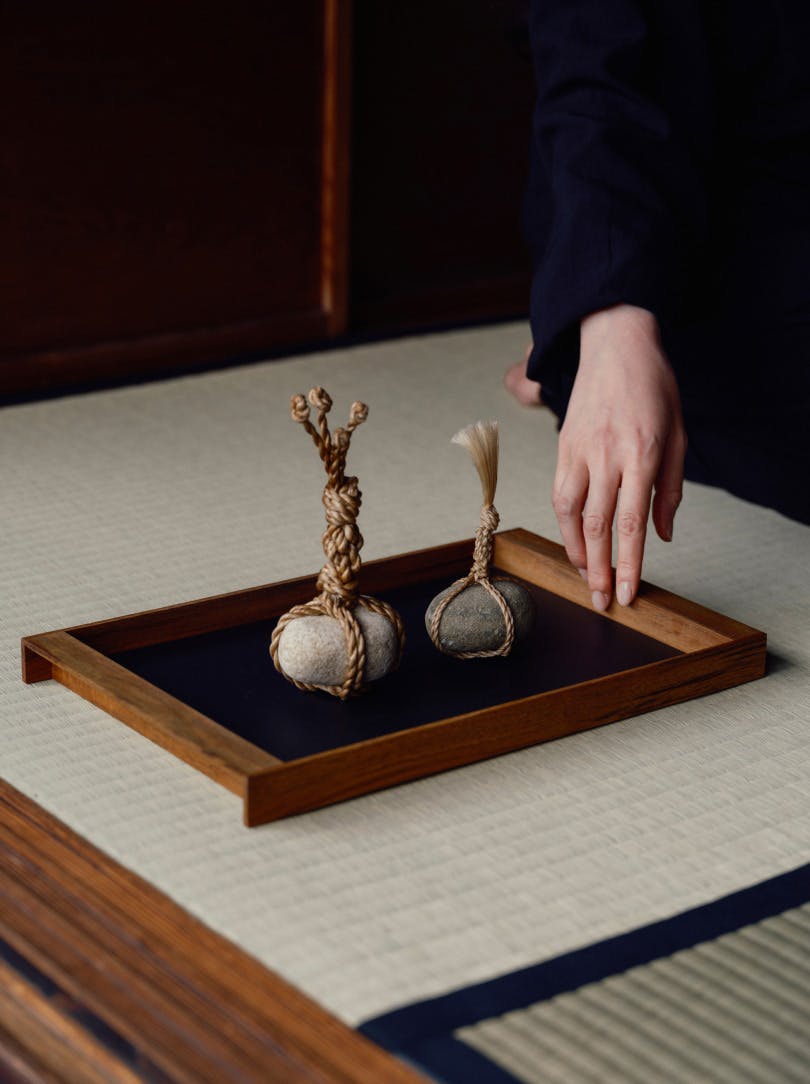
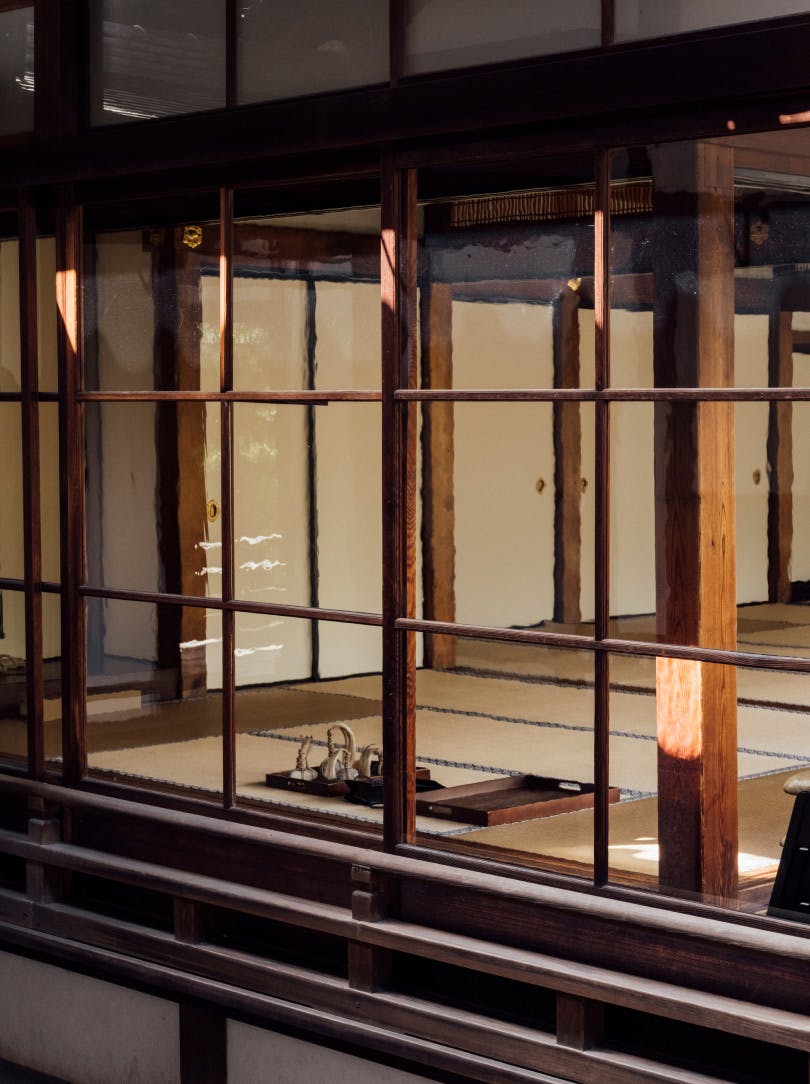
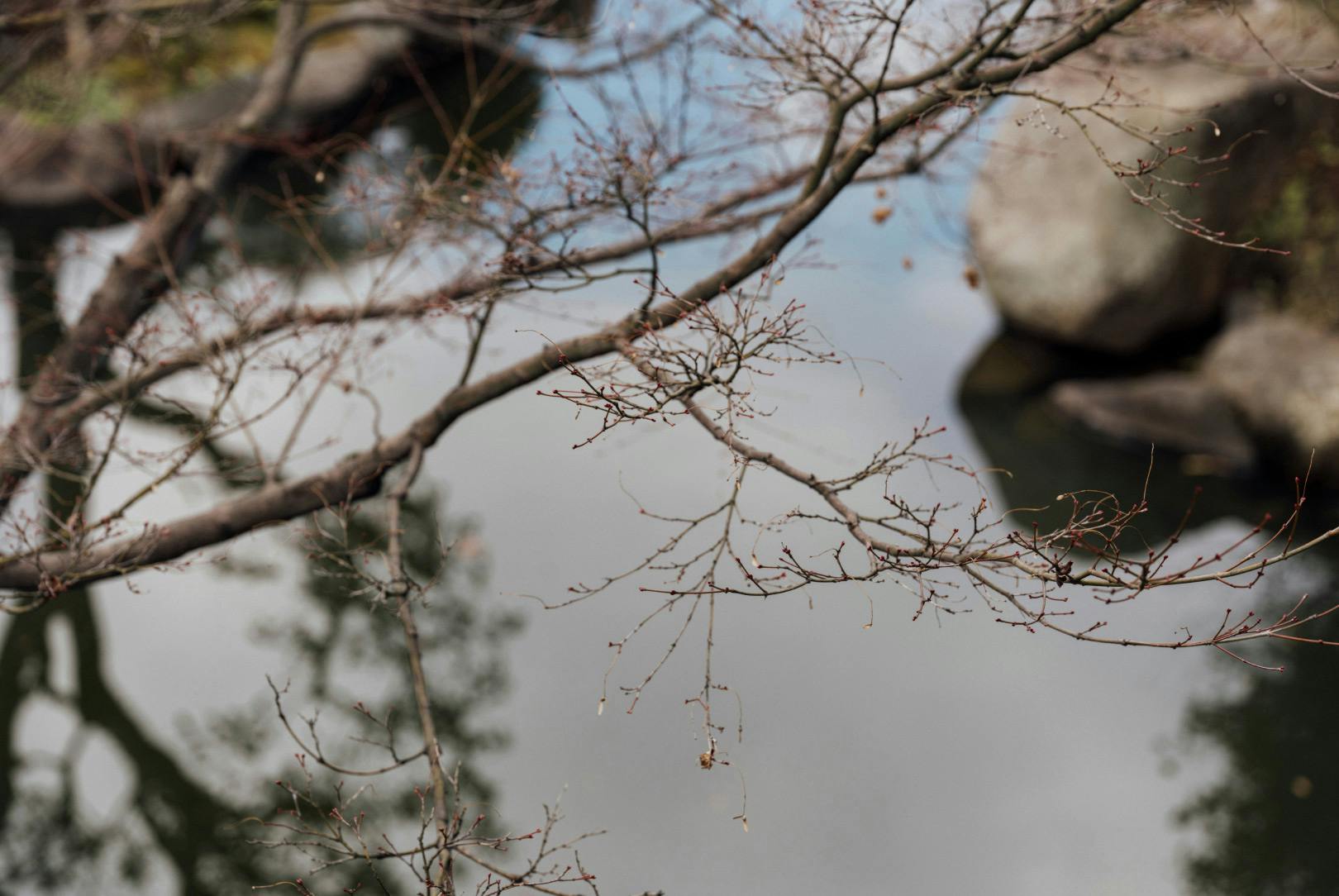
The smallest stone in the family contains a microcosm of the earth in the blurred palette of its organic surface, its form safely harnessed in a fresh flow of ropes shooting up to the skies like young seedlings. We find ourselves here amidst the shades and textures, spirituality and layered beauty of Japan’s world of border stones – known as ‘kekkai seki’. These hemp-wrapped stones are deeply rooted in Japan’s ancient spiritual practices and traditional cultural aesthetics – just like bamboo-whisked matcha, imperfection-edged ceramics and the artful asymmetry of ikebana flowers.
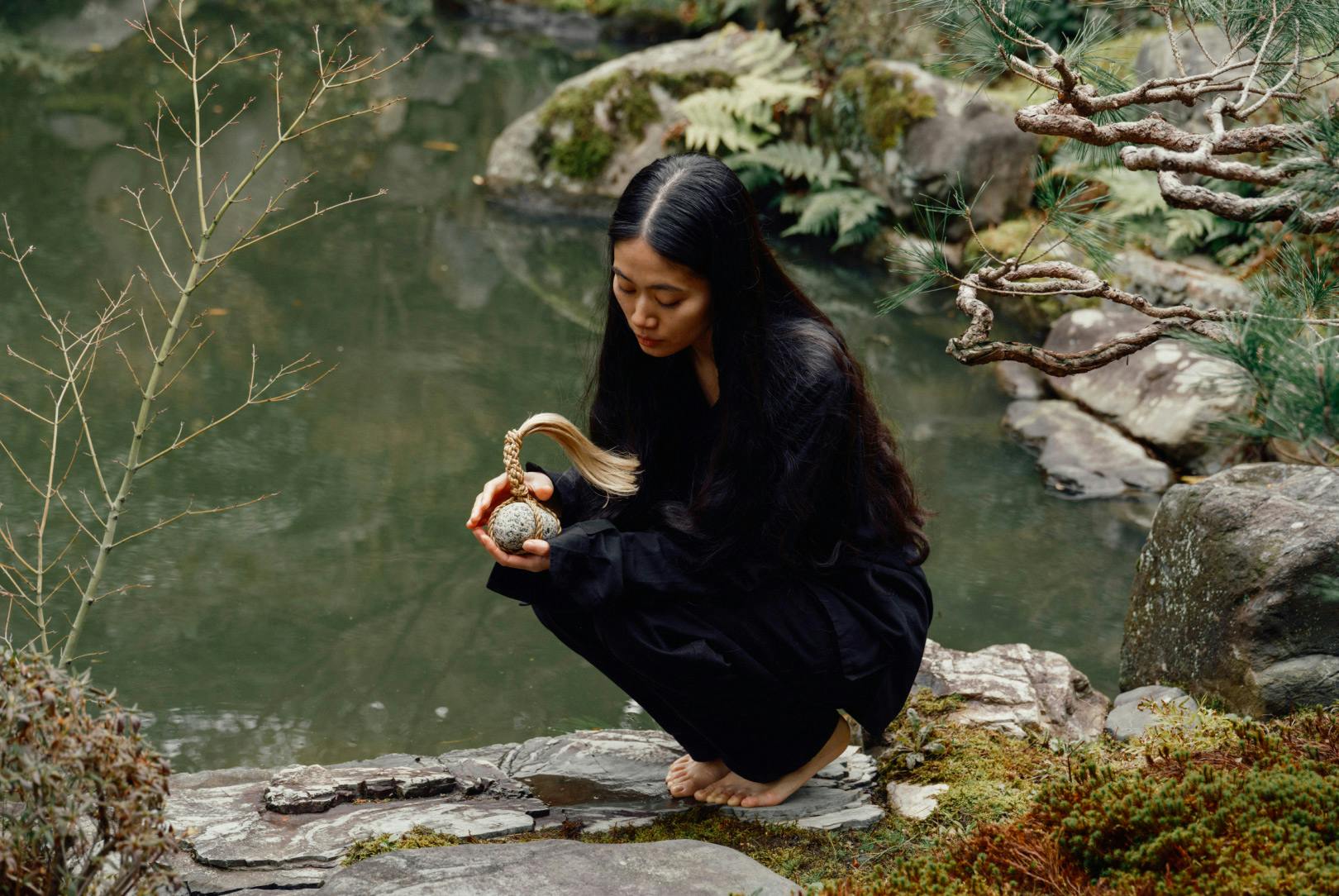
The elemental function of these stones is to create a ‘boundary’ (the meaning of ‘kekkai’) between the inner and the outer, the sacred and the profane, the higher and the lower, the spiritual and the physical, the eternal and the impermanent. The literal meaning of ‘kekkai seki’ is ‘boundary stone’, rooted in the notion of creating a demarcation between two disparate realms.
And so, through the centuries, these hand-tied stones have been placed, with discretion and mindfulness, in a variety of places to delineate a boundary. The stones also play a key role in Japan’s ritualised tea ceremony. Traditionally positioned along garden pathways, a scattering of ‘kekkai seki’ is used to guide visitors past rocks, moss and blooms, reflecting the micro-shifts of nature, to the entrance of a chashitsu tearoom – gently supporting an important transitionary journey from outside world to inner sanctum.
This particular family of stones is sitting peacefully on a tray at Ryosokuin – a sub-temple dating back more than 600 years at Kenninji, Kyoto’s oldest Zen temple. They were handmade by a Zen Buddhist monk who knows all about balancing the past with the future, the old with the new, the traditional with the innovative: Tosei Shinabe.
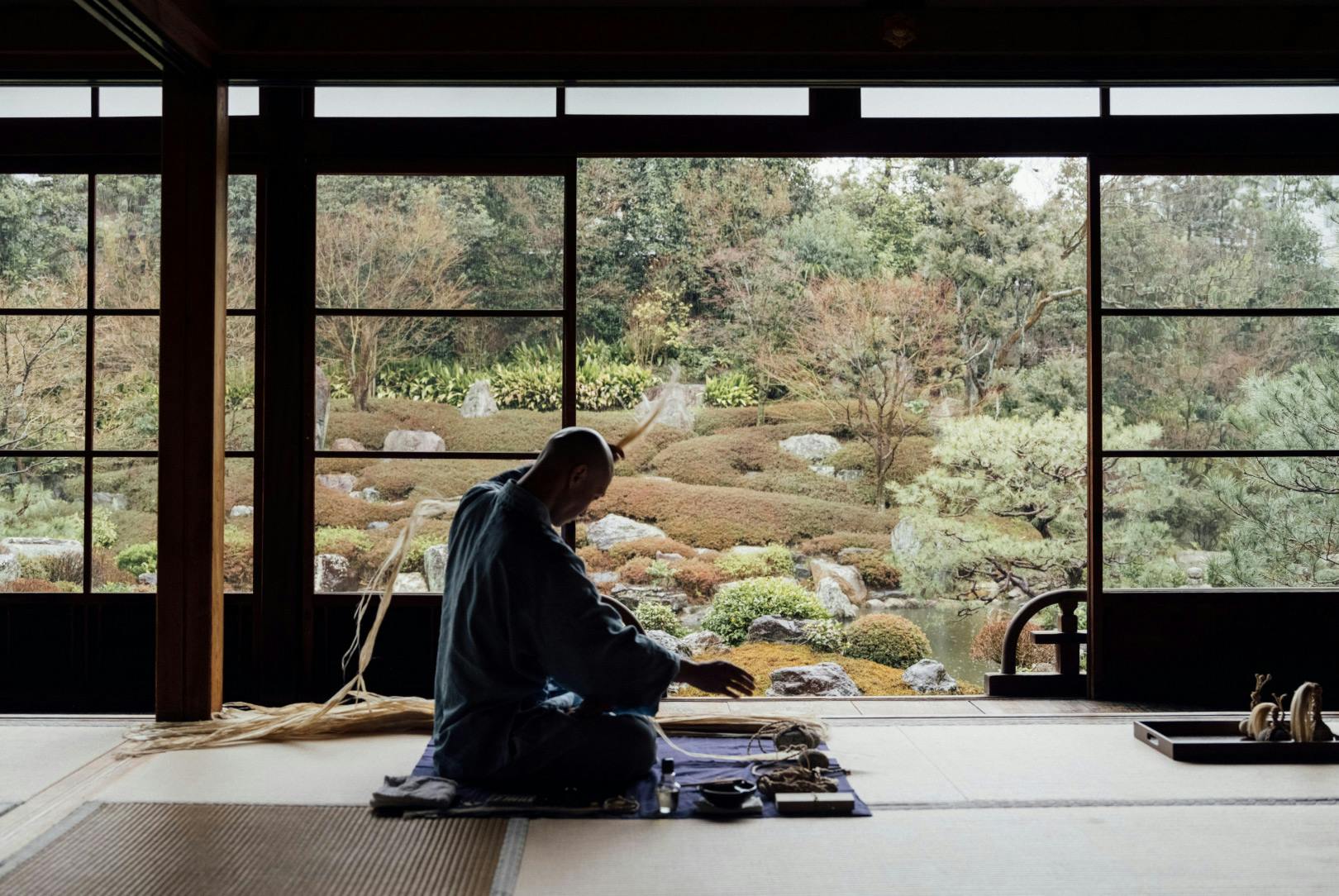
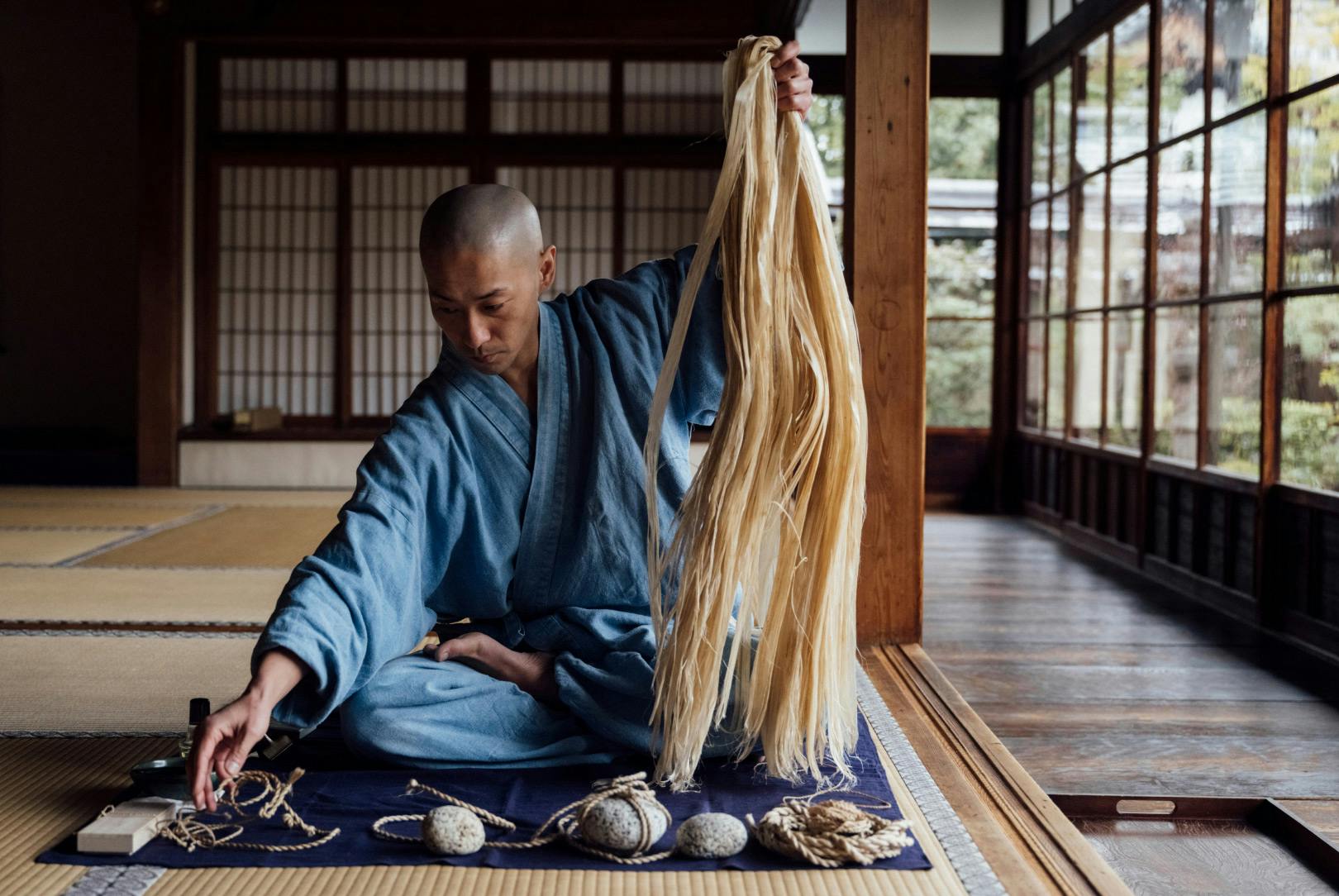
For Tosei Shinabe, the journey that led him to ‘kekkai seki’ is layered, colourful and refreshingly unexpected – smoothly defying any preconceptions that the words ‘Buddhist’ and ‘monk’ might typically bring to mind. A meandering life path – through wildly rebellious teen years, a law degree, stints of global travel and, an important piece of the puzzle, years spent working with Kyoto’s craftsmen – led to a realisation around the age of 30 that all roads lead to Zen.
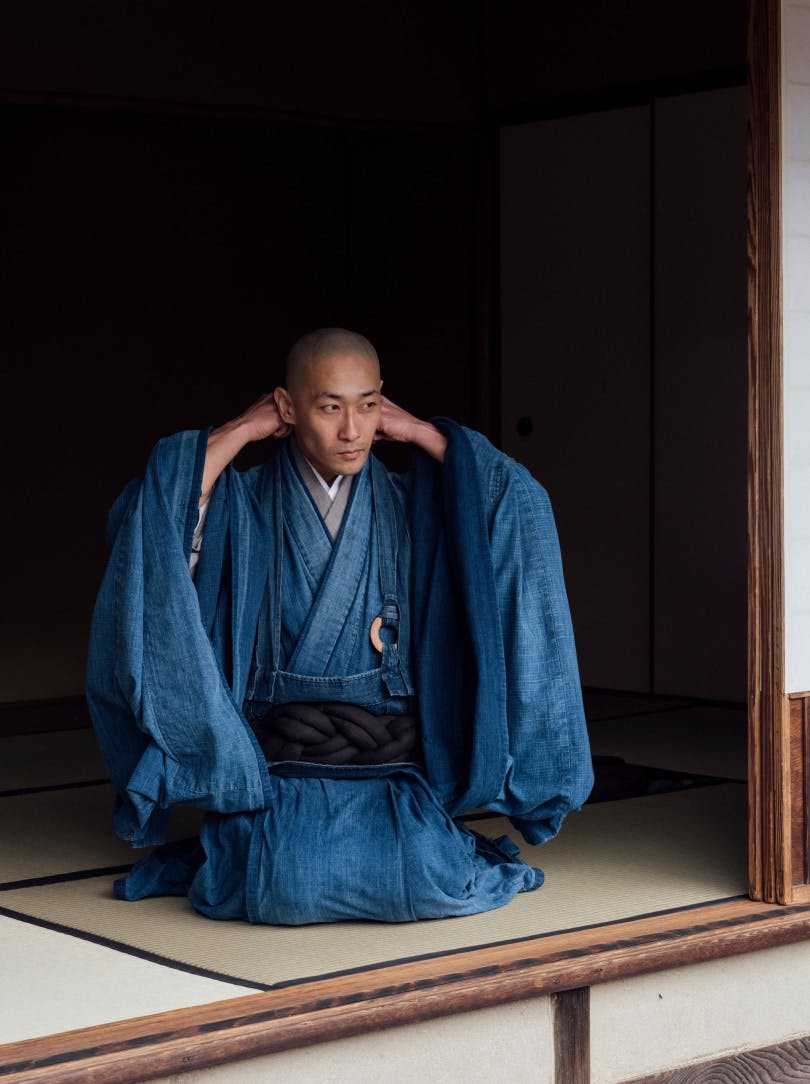
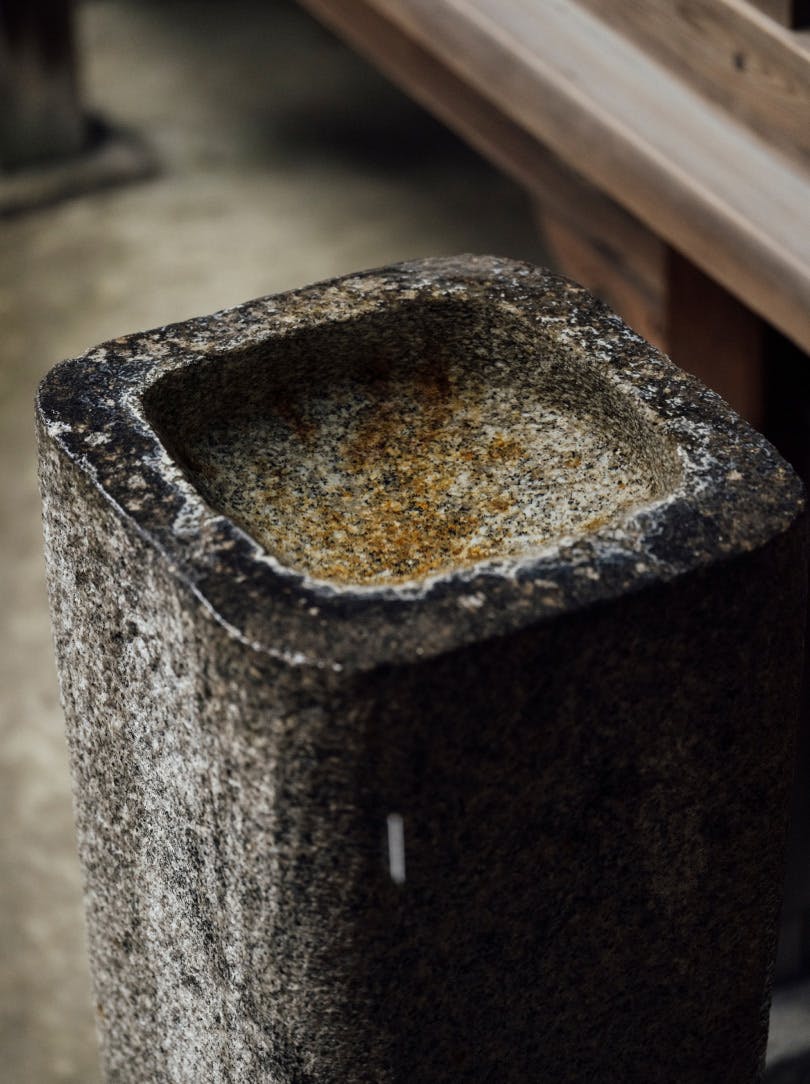
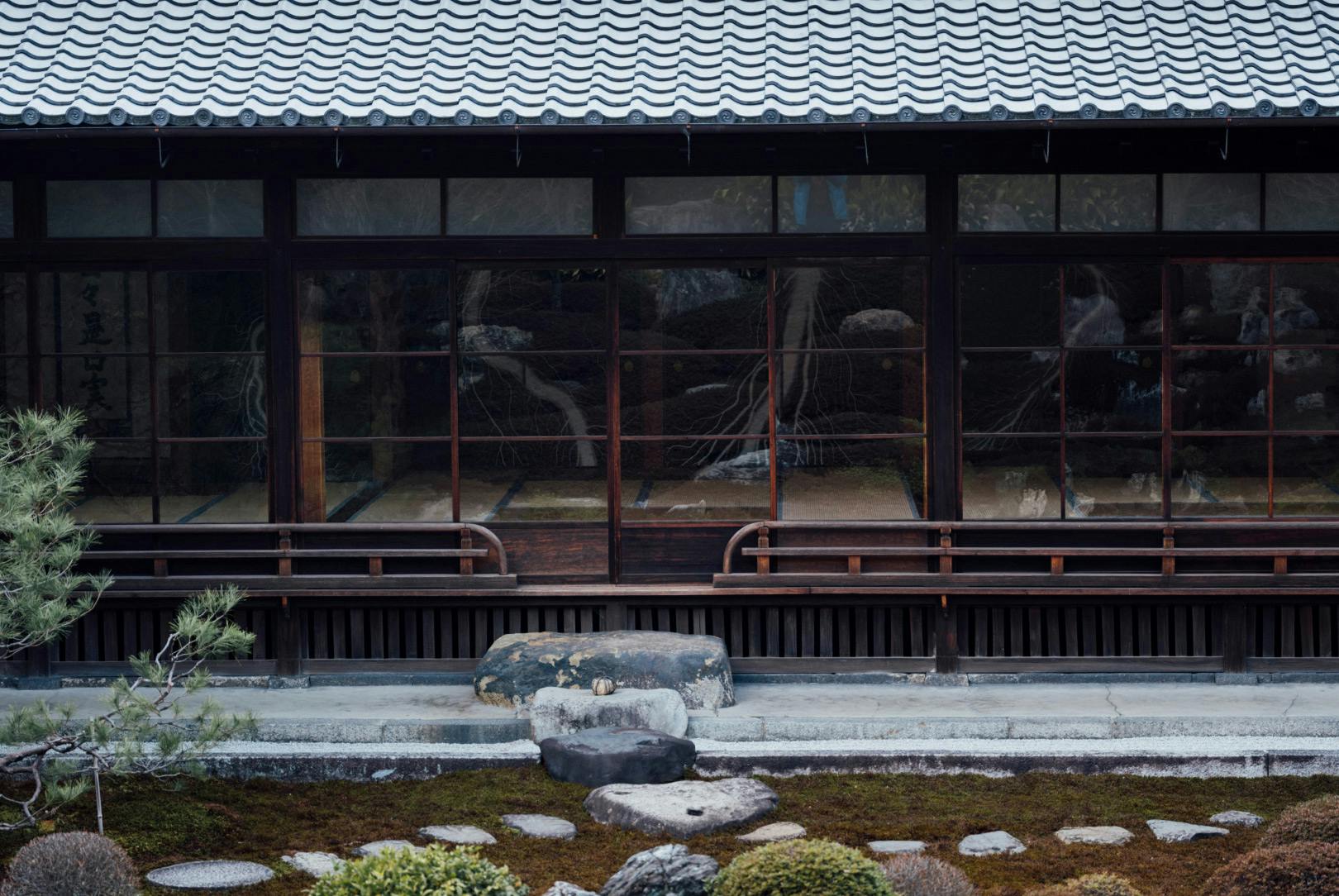
Today, as a monk, his days are spent mainly teaching meditation, as well as making ‘kekkai seki’ entirely by hand, from sourcing the stones on an island steeped in myths to weaving the hemp strands into thread. And he believes that both activities contain the essence of all that is Zen. “Japanese people’s spirituality is always connected to Zen Buddhism,” says Tosei. “When we pick an art piece from the craftsmen, the reason why we feel it’s so beautiful is because there is a sense of Zen spirituality. That is what we’re looking for, always. That is the foundation of Japanese people’s spirit.”
“I was quite wild as a child. I loved enjoying myself in nature.”
TOSEI SHINABE
Tosei greets us with a gentle bow and a warm smile, exuding friendliness and calm. At first glance, he appears the ultimate poster boy for modern-day monk life. With shaven hair, he is smoothly spoken, gently polite, and impeccably attired: his outfit is crafted from the same hemp used in his stone rope, known as ‘taima’. Made by the Japanese brand majotae, the hemp textile is indigo-dyed the lightest shade of sky blue and transformed into ‘samue’ – a traditional crossover top and trousers.
As the rain continues to fall at Ryosokoin, Tosei enters the tatami mat room slowly, mindfully. He places on the woven floor a square piece of dark cloth – known as a ‘furoshiki’ – before laying out his tools and materials: among them, a chosen stone, white strands of hemp, some camellia oil and candles.
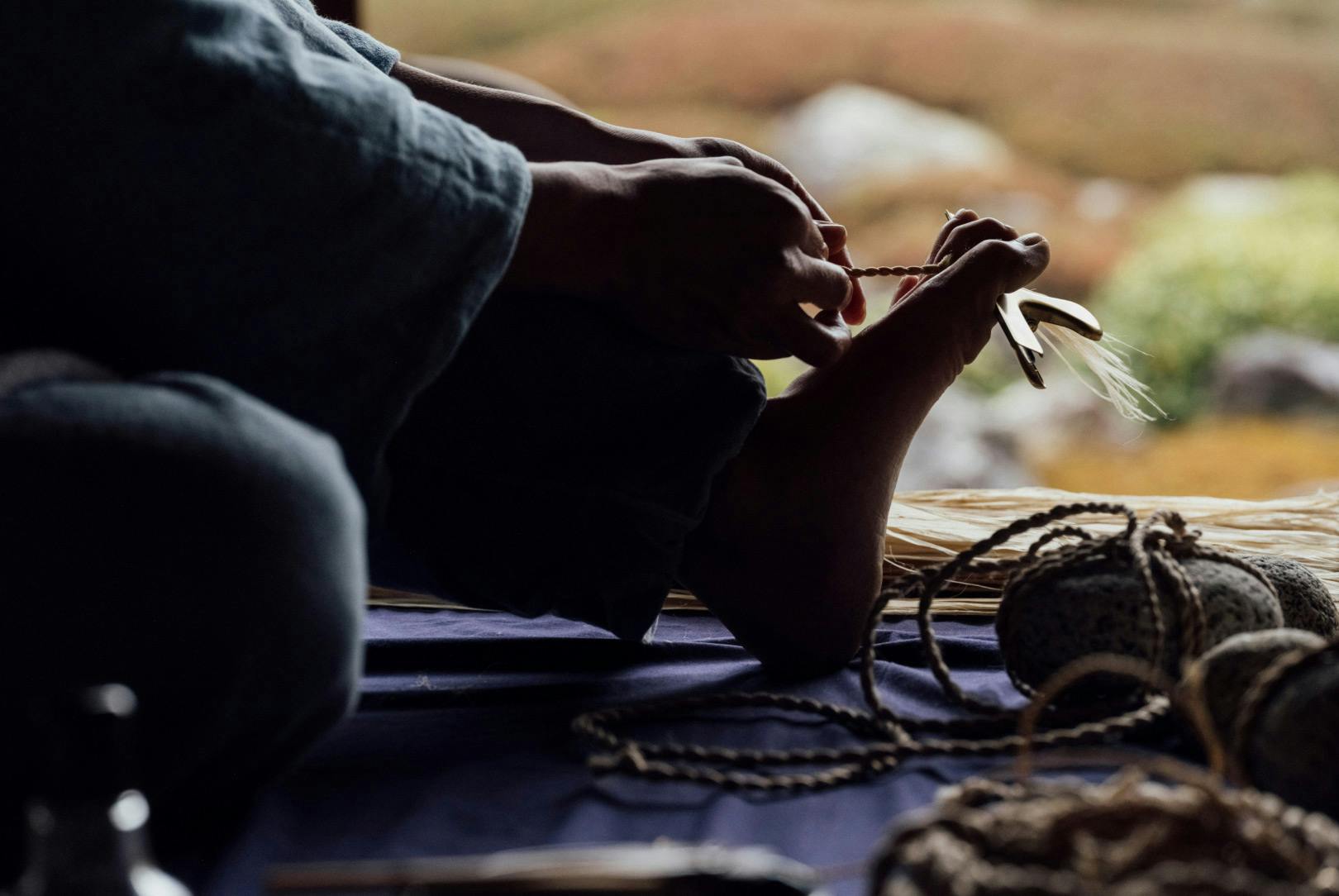
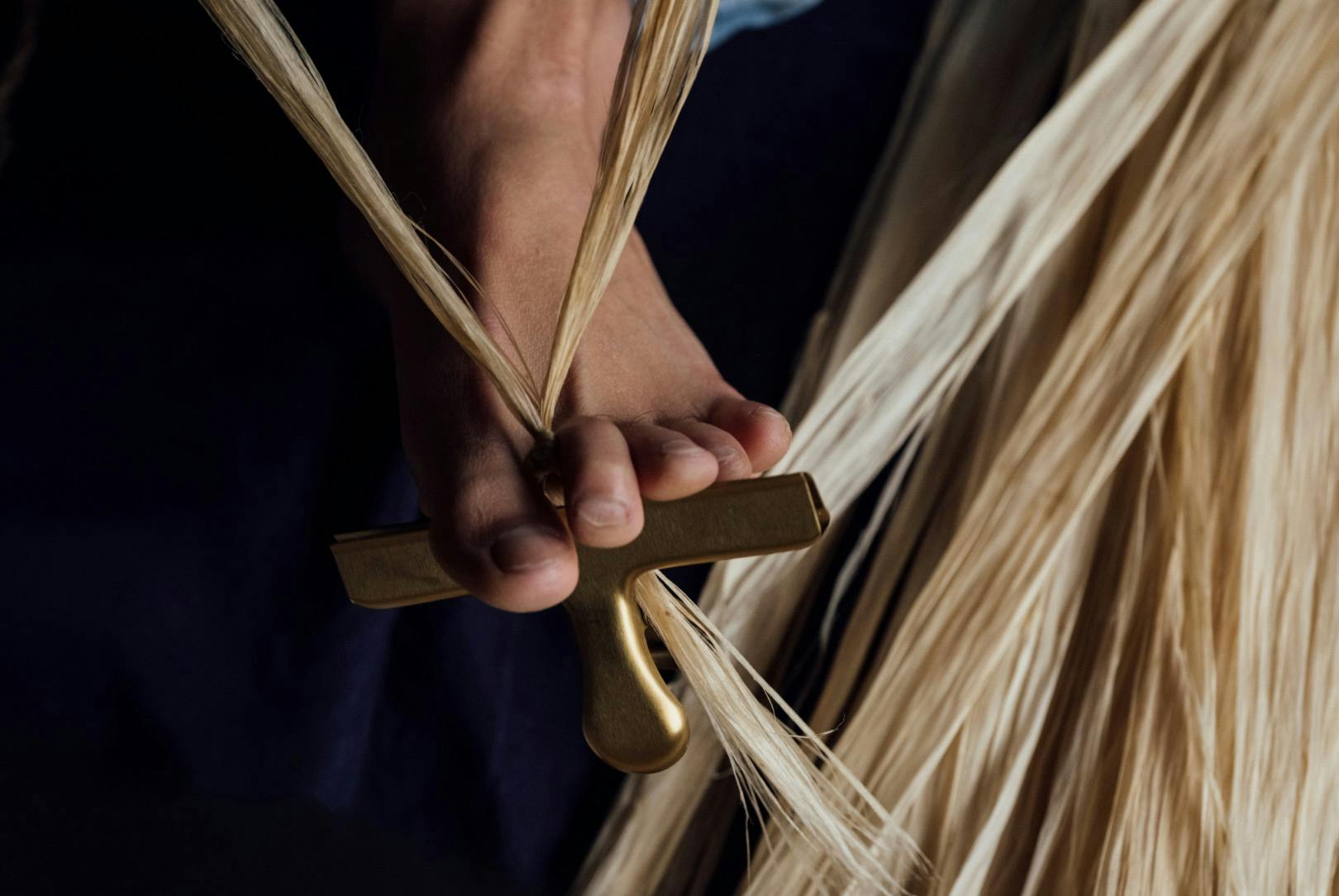
We follow him and kneel at a distance at the rear of the room, positioning ourselves, at his urging, next to the plug-in heater to keep warm in the chilly air. A stillness descends as Tosei sits on his cloth and begins. First, he weaves the hemp: after rubbing his hands with oil, he fastens a clamp-like device to his toes on an outstretched leg and attaches hair-like strands of hemp, long and light blonde, before weaving them tightly into rope.
The seconds seem to slow as he continues – slowly, methodically harmonising a sea of strands into a single thread. Once this is complete, he lights a small white candle and quickly passes the woven hemp above the flame, burning off smaller strands. Next, he picks up the stone and carefully wraps the hemp around its organic form, creating a neat cross-cross shape – and places it on the tray. The ‘kekkai seki’ is complete. The stones are as profoundly evocative as the temple setting; the simplicity of their form and the organic texture of their material bring to mind the unrivalled beauty of nature.

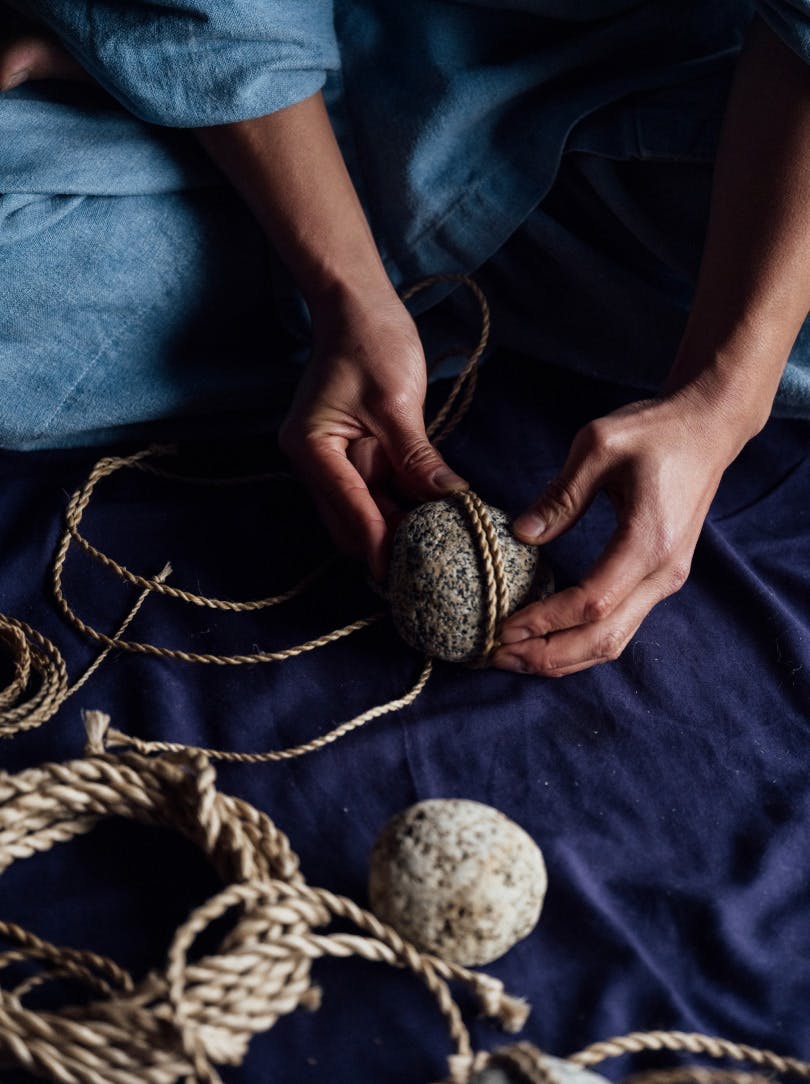
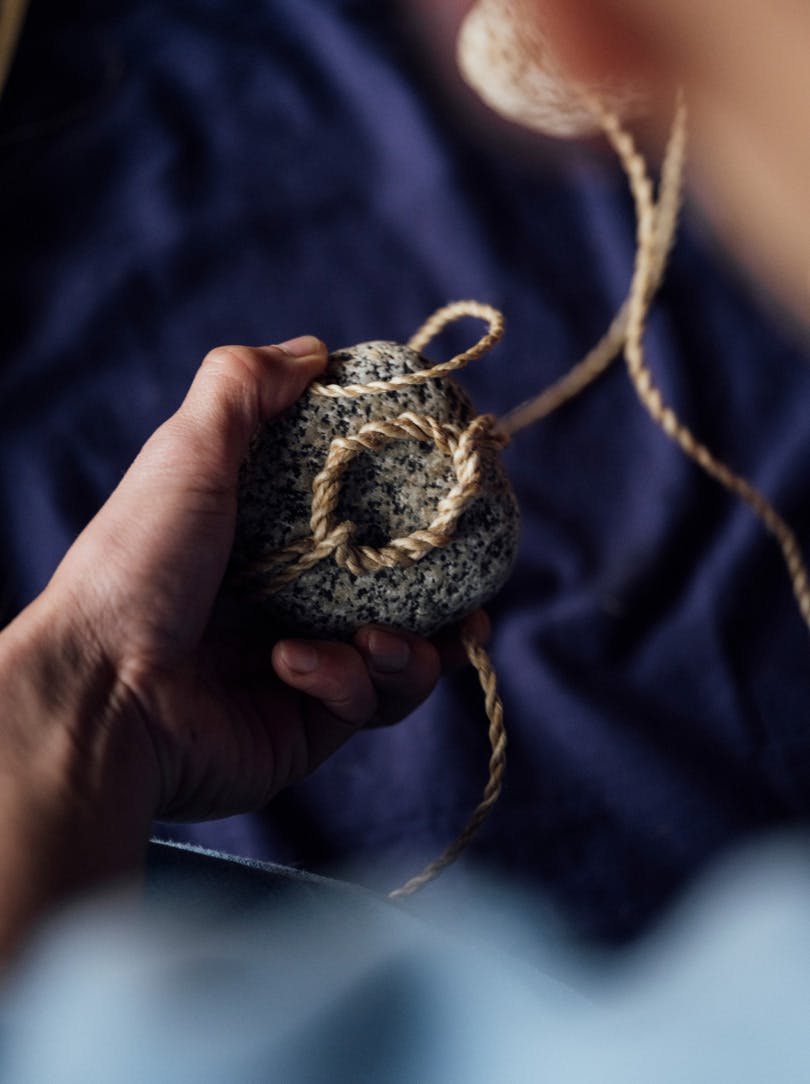
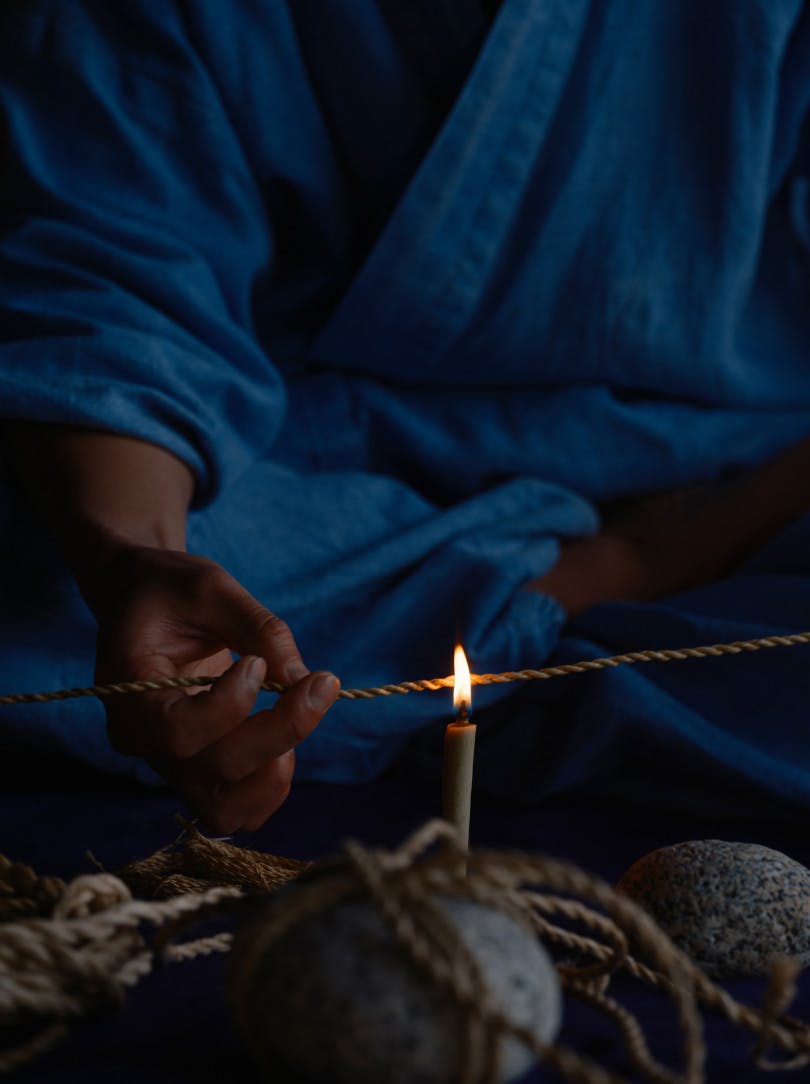
For Tosei, the journey into this world of stone, hemp and spiritual boundaries is perhaps rooted in his childhood – conversations about which he scatters with the word ‘yancha’, meaning ‘wild’. Born into a family he describes as “completely normal” – a father working at a water purification technology firm, a housewife mother, a younger sister – they moved several times through his childhood, as is often the case with Japanese company workers.
The first five years of his life unfolded “normally” in Tokyo, where he was born, before the family relocated to Ibaraki Prefecture, north of the capital. With a smile, he explains: “Wild. I was quite wild as a child. I loved enjoying myself in nature. In Ibaraki, we were close to a big river. It was pretty dirty but it was where I would play with my friends. That was my playground.”
The primal pull of nature was always present. “The river and animals inspired me. I was interested in insects and animals and the water of the river.”
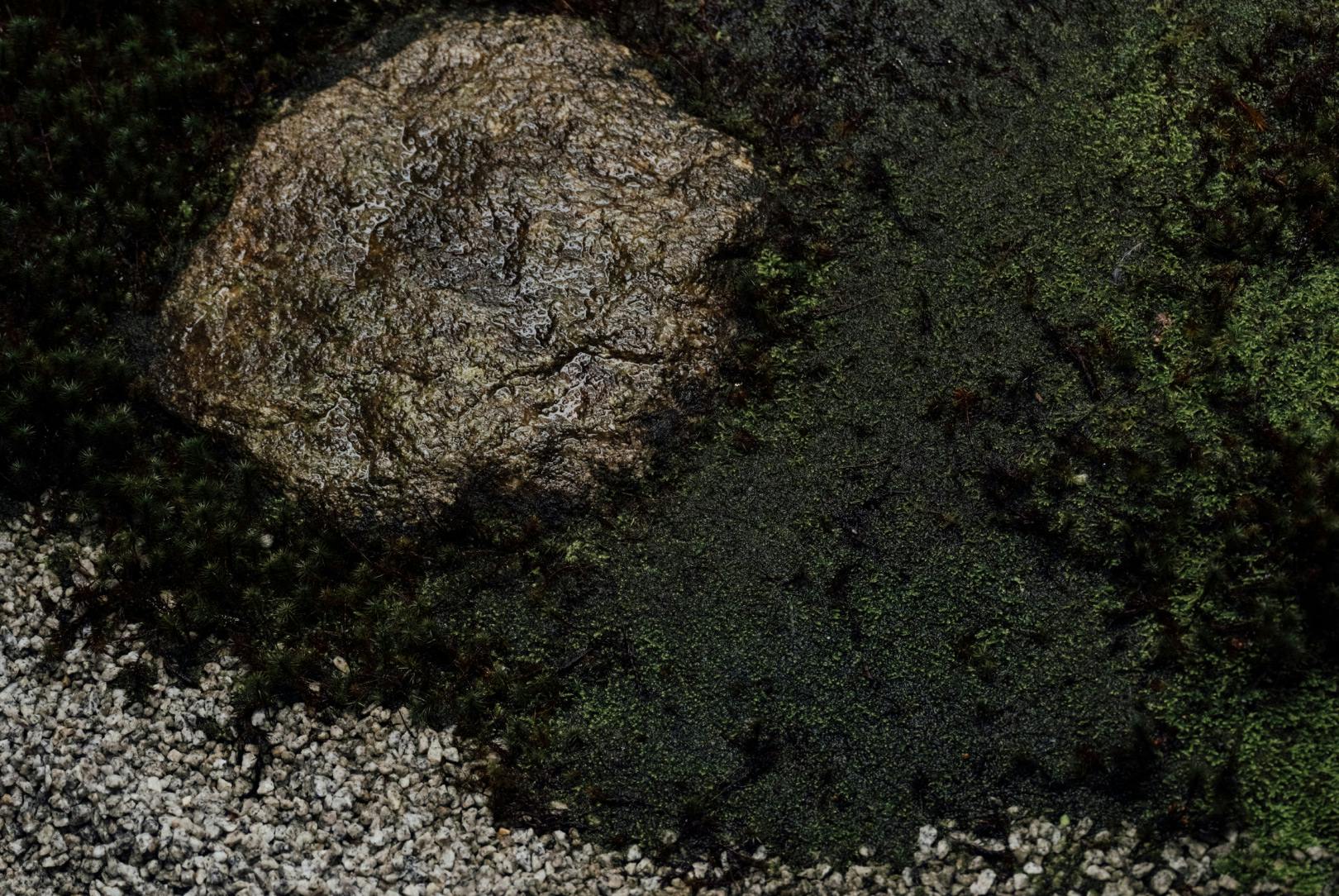

At the age of 12, the family moved to the ancient city of Nara – not far from Kyoto and Osaka – and, as Tosei reached his teens, his “wildness” took on a different dimension. “I was always out playing in Osaka and I was always rebelling. My teachers would scold me and call my parents. I was always questioning things and I felt that the adults didn’t understand.” He pauses, before adding: “I don’t really remember what exactly I was always questioning. But one big thing I do remember is the feeling that humans are also part of nature. We are also one of the animals. That’s what I always believed and I didn’t understand why other people didn’t feel the same way.”
His deep and instinctual connection to nature has clearly not faded with the passing of time. We witness it as Tosei suddenly pauses mid-conversation as he spies a tiny black insect in front of him. He gently scoops it up in his hands, places it outside the room, returns to his seat and smoothly carries on talking.
After being packed off to a boarding prep school for a year by his parents, to avoid further rebellious distractions, Tosei secured a place at university in Kyoto to study law – a course that took six years to complete, after taking on an array of part-time jobs and backpacking in Asia and Europe.
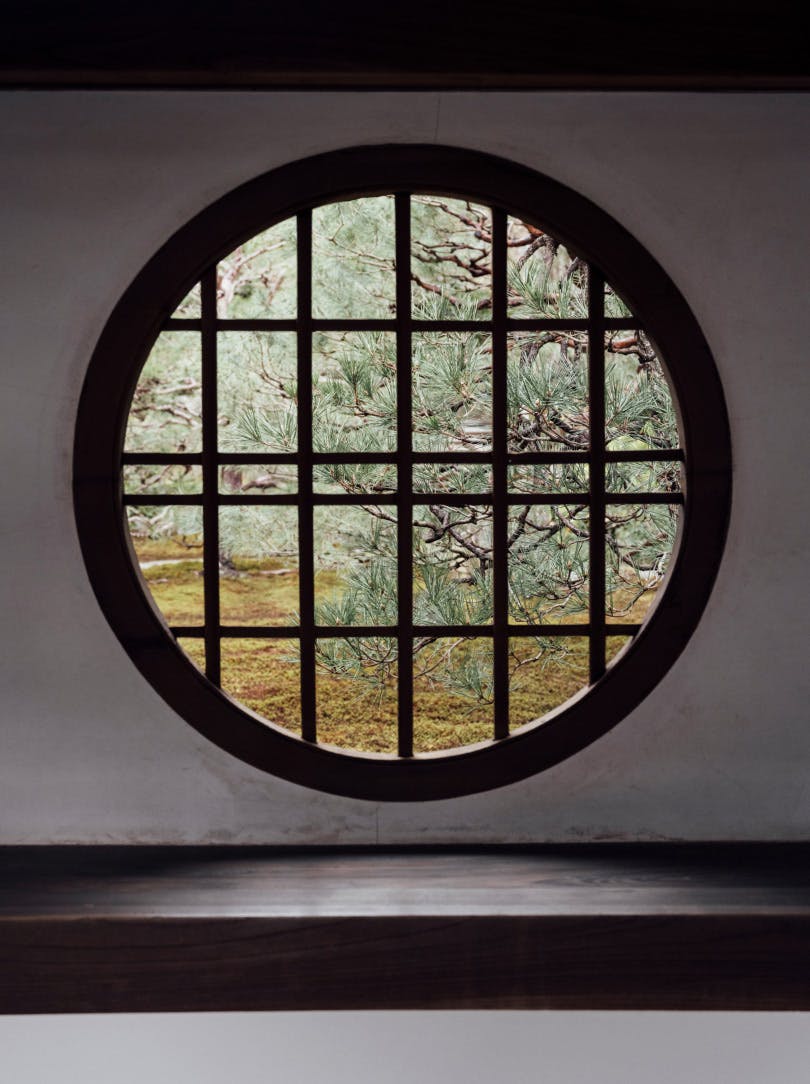
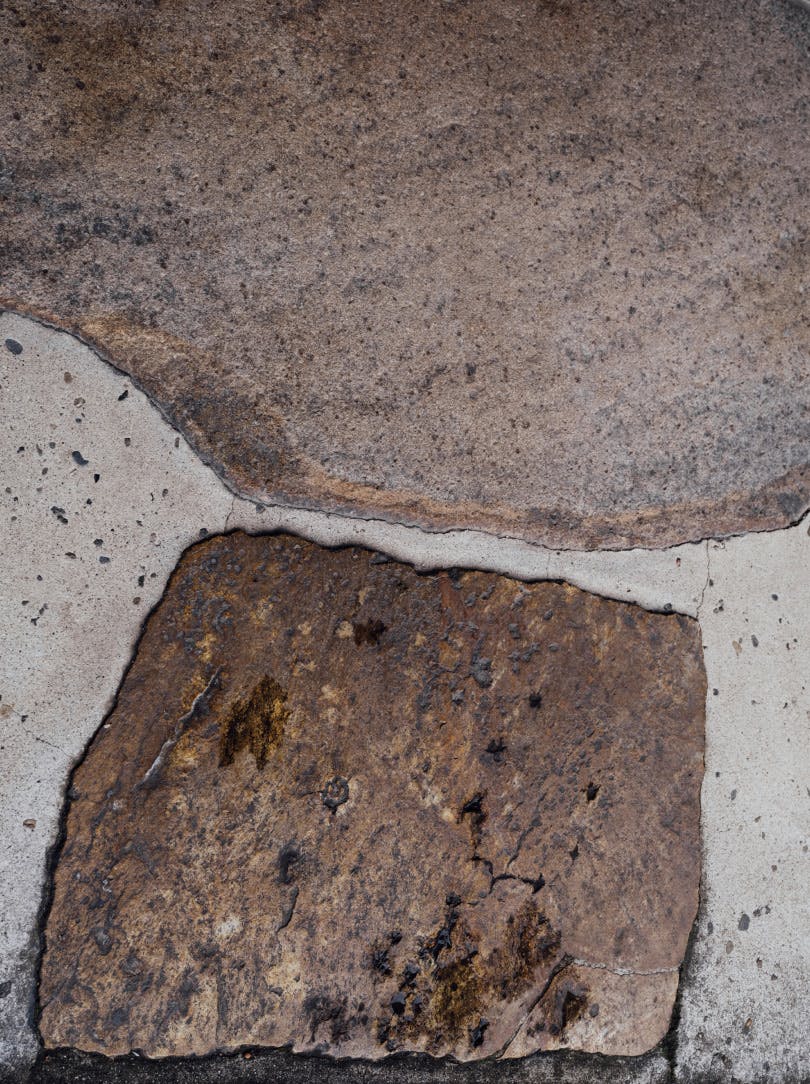
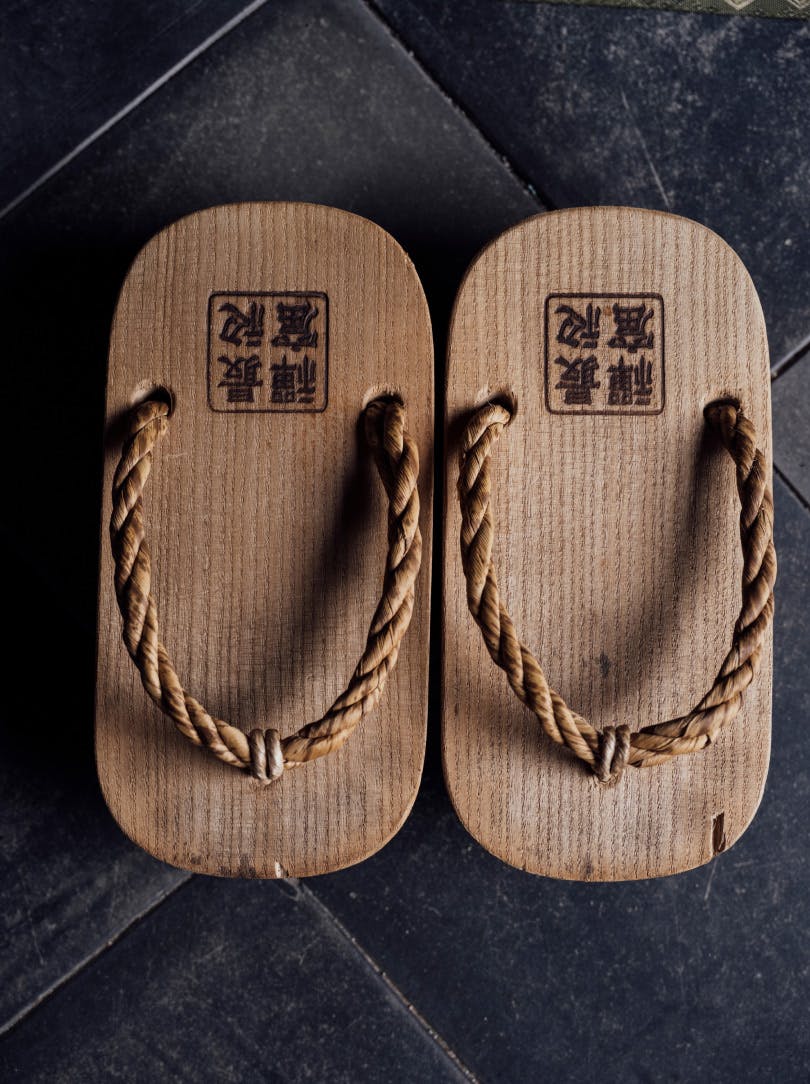
His time studying may not have led to a conventional career as a lawyer but it left a different kind of imprint: it helped sharpen his perspective on the truth of the human condition and the dynamics of man’s behaviour in society. “I realised that common sense and law were two completely different things,” he says. “I had initially thought that common sense was based on law – but as I studied law and travelled, I realised that common sense could be decided individually.” These intuitive glimpses into the human condition paved the way for the next step on his yet unconscious journey towards Zen Buddhism – a job producing crafts alongside a wide cast of Kyoto artisans.
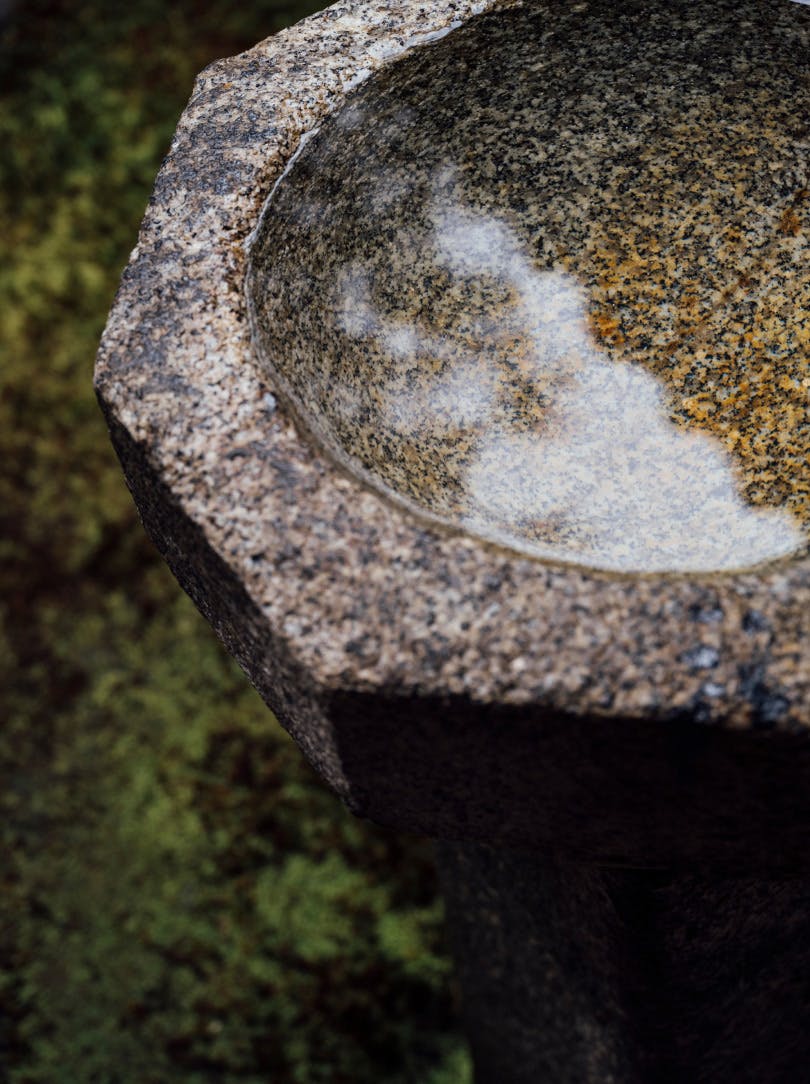
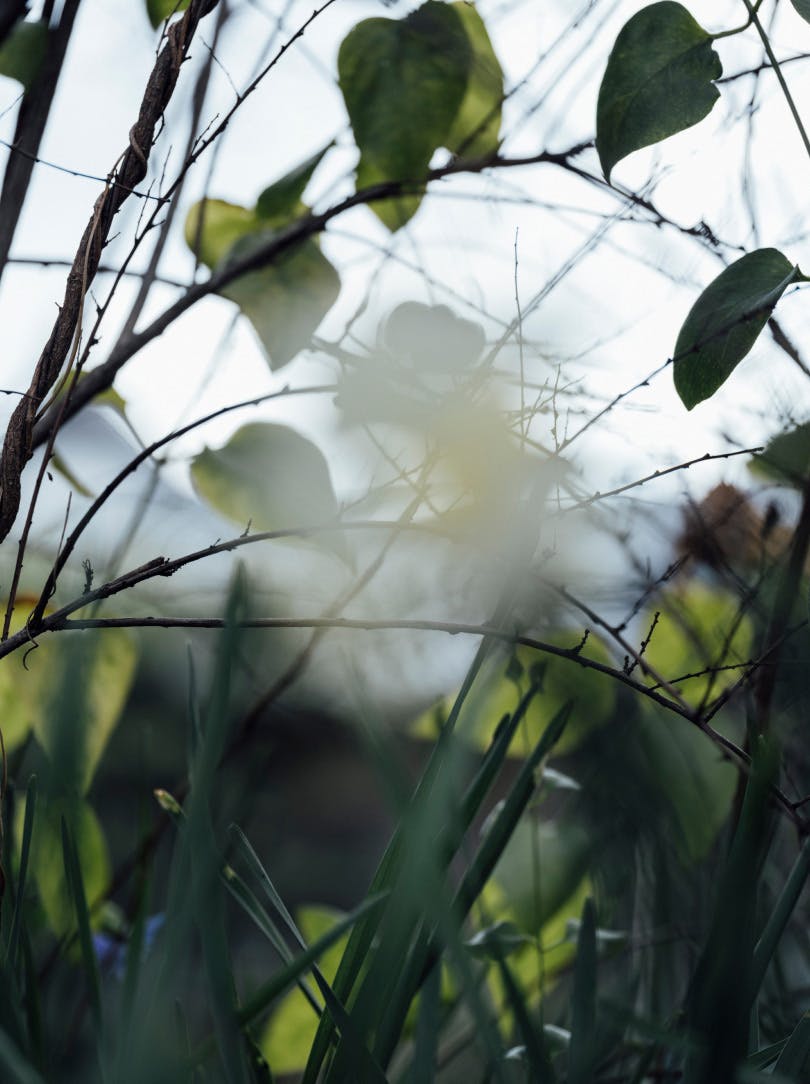
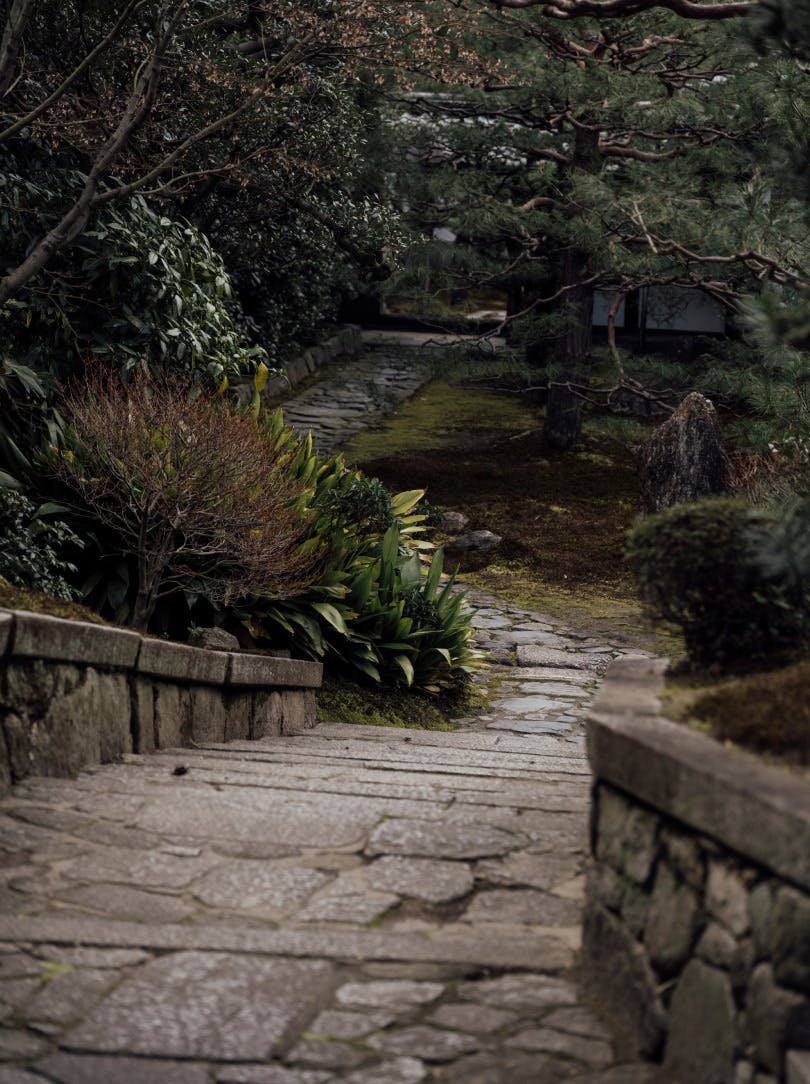
Working directly with craftsmen to create products for everyday life, Tosei collaborated with countless specialists, seeking to balance treasured generations-old techniques with the needs of the modern world. Explaining the types of crafts, he lists a roll-call of Kyoto’s finest products: “O chatsuzu tea caddies, Nishijin ori fabric, chochin paper lanterns, urushi lacquerware, yakimono pottery, take kogei bamboo crafts, chokin metal engraving, and Kanaami cooking utensils.”
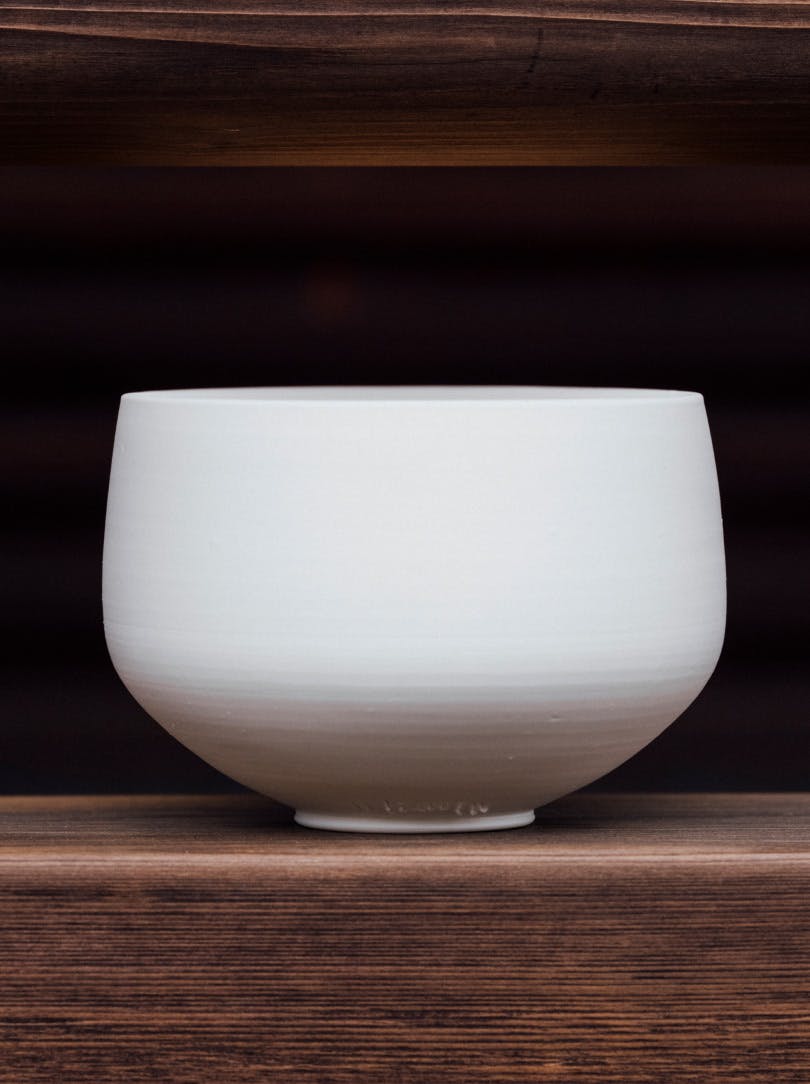
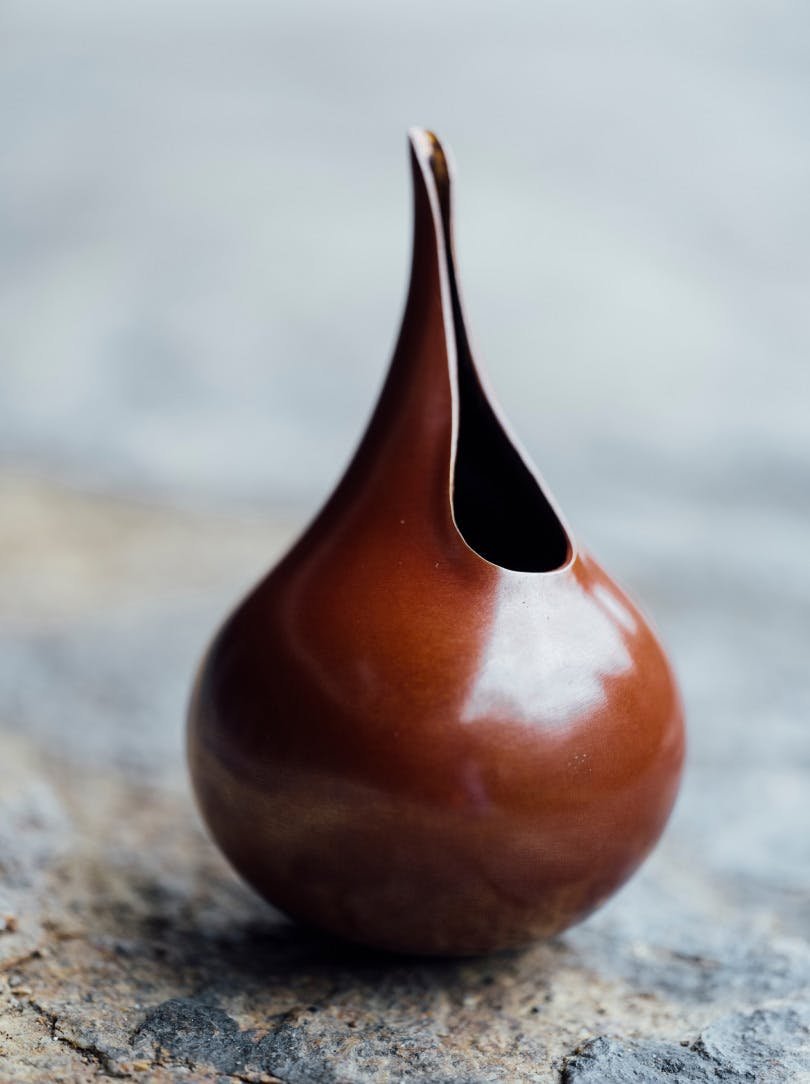
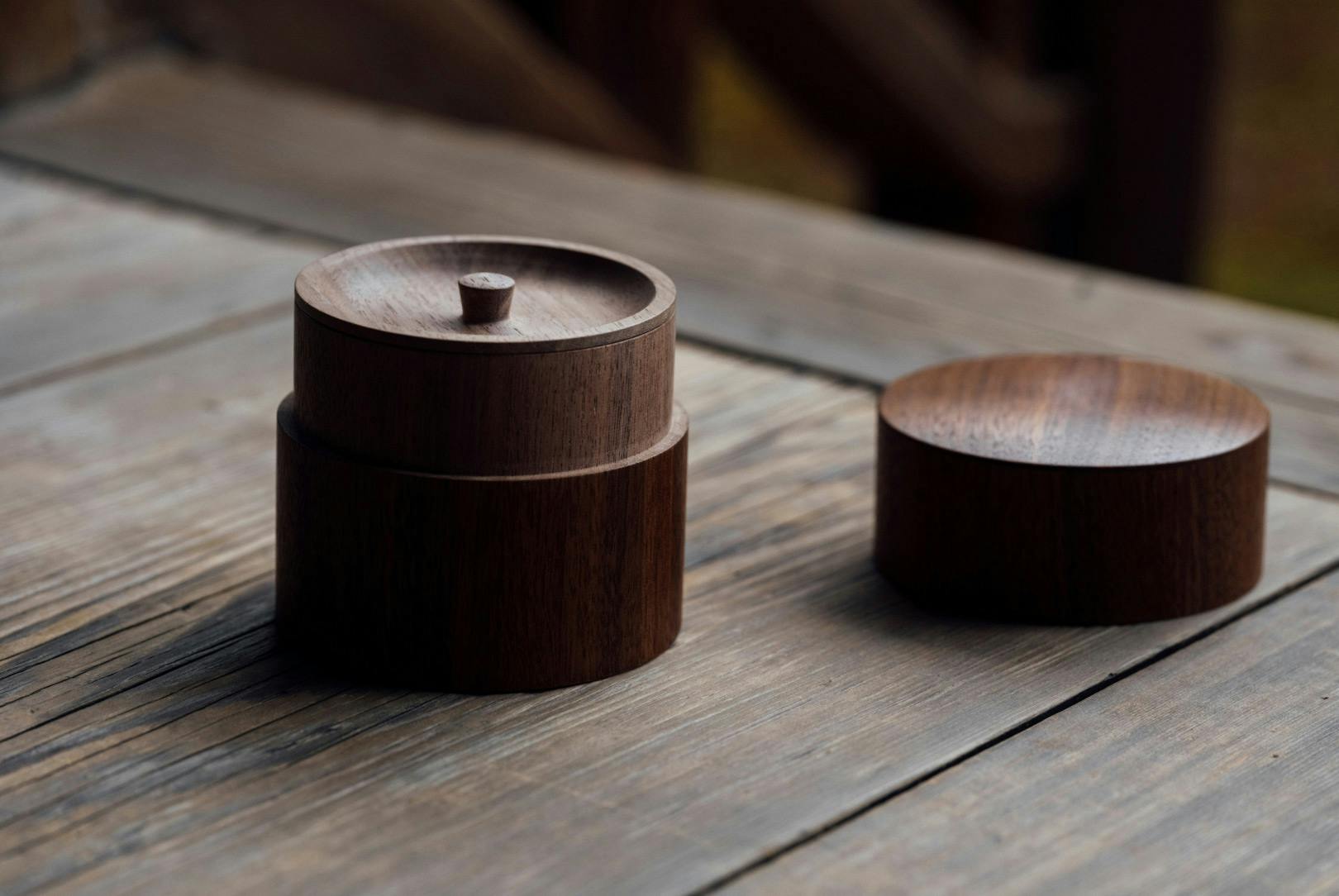
It was a defining time for Tosei. He gained a profound insight into the artisans’ motivations and values, as well as the technical expertise that defined their creations.
“During those years, I was with craftsmen 24 hours a day, 365 days a year,” he explains. “I really got a feel for their passion and philosophy. What is important for them is to carry on and keep alive the techniques and craftsmanship – more than their work being about themselves. Their ego is set aside. That way of living was very inspiring for me.”
“Working with craftsmen was one of the main reasons I chose to become a monk. I believe there is a sense of spirituality in craftsmanship.”
His words remind us of the moment earlier, when we watched him creating his own kekkai stones. It seems that his actions, which were slow, mindful and meticulous, mirror precisely this world of craftsmanship in which he was immersed at that time in his life.
Tosei adds: “Normally, people want to prove themselves and achieve something. They are the main person in their lives. But for craftsmen, their priority is craftsmanship and creating beauty. It’s a very selfless way of living. For me, it was a new way of living.”
These ideas came to a life-pivoting head at the age of 30, when Tosei was producing an exhibition at Ryosokuin temple, showcasing the work of half a dozen Kyoto pottery artists. When the event ended, Tosei was approached by Toryo Ito, the deputy head priest at Ryosokuin. As a monk from the younger generation, Ito – known for smoothly harmonising a contemporary creative perspective with Zen philosophies, from temple exhibitions of artists such as Hiroshi Sugimoto to fashion collaborations – asked him a seemingly simple question: “Why don’t you become a monk?” Tosei laughs at the memory of his question – and the enormity of its consequences: “Have you ever imagined someone asking you to become a Zen monk?”
The question hovers silently in the air after his laugh subsides, as our minds try to grasp the sheer enormity of this lift-shifting exchange and the initial surprise Tosei must have felt in that moment.
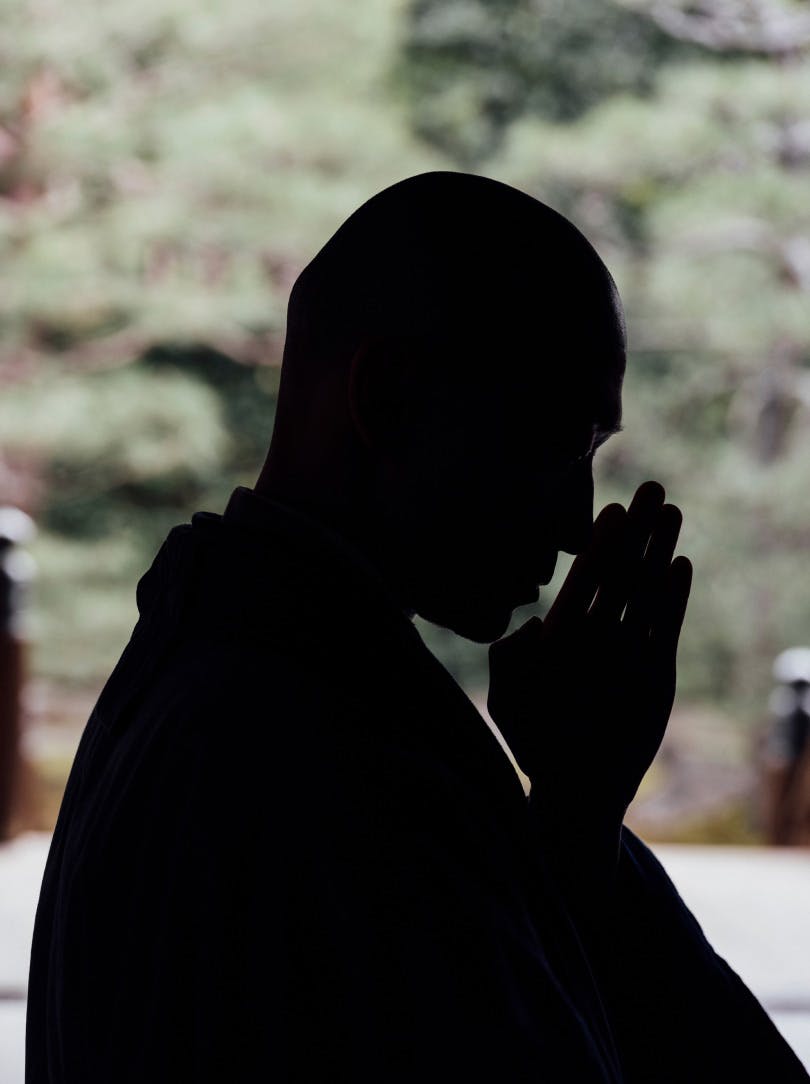
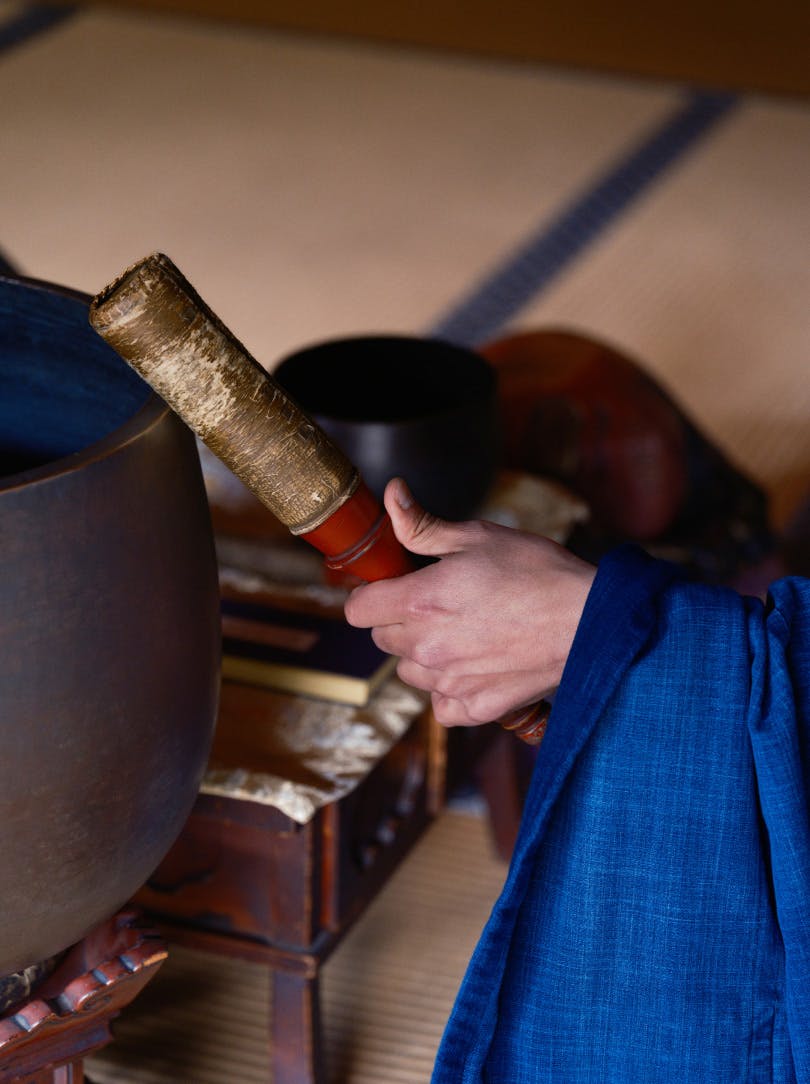
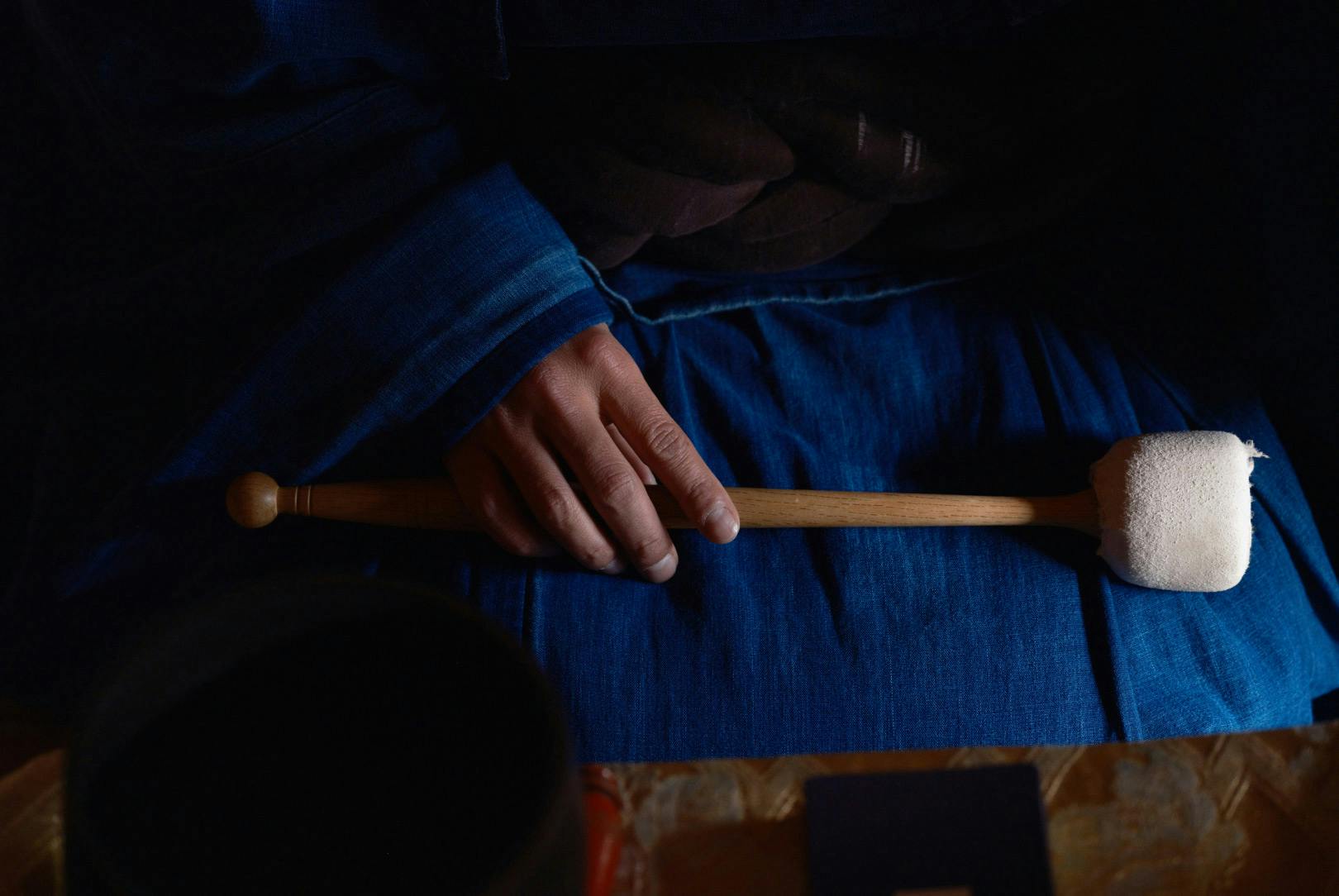
Those words sparked nearly a year of soul-searching for Tosei. However, the more he contemplated this previously unanticipated path, the more it made sense – like the final piece in a jigsaw puzzle.
“Working with craftsmen was one of the main reasons I chose to become a monk,” he says. “It definitely planted a seed. I believe there is a sense of spirituality in craftsmanship. Artisans spend so many hours on a tiny corner that no one else might ever even see. Or a surface under a surface. So many hours of dedication and attention. This is a form of spirituality.”
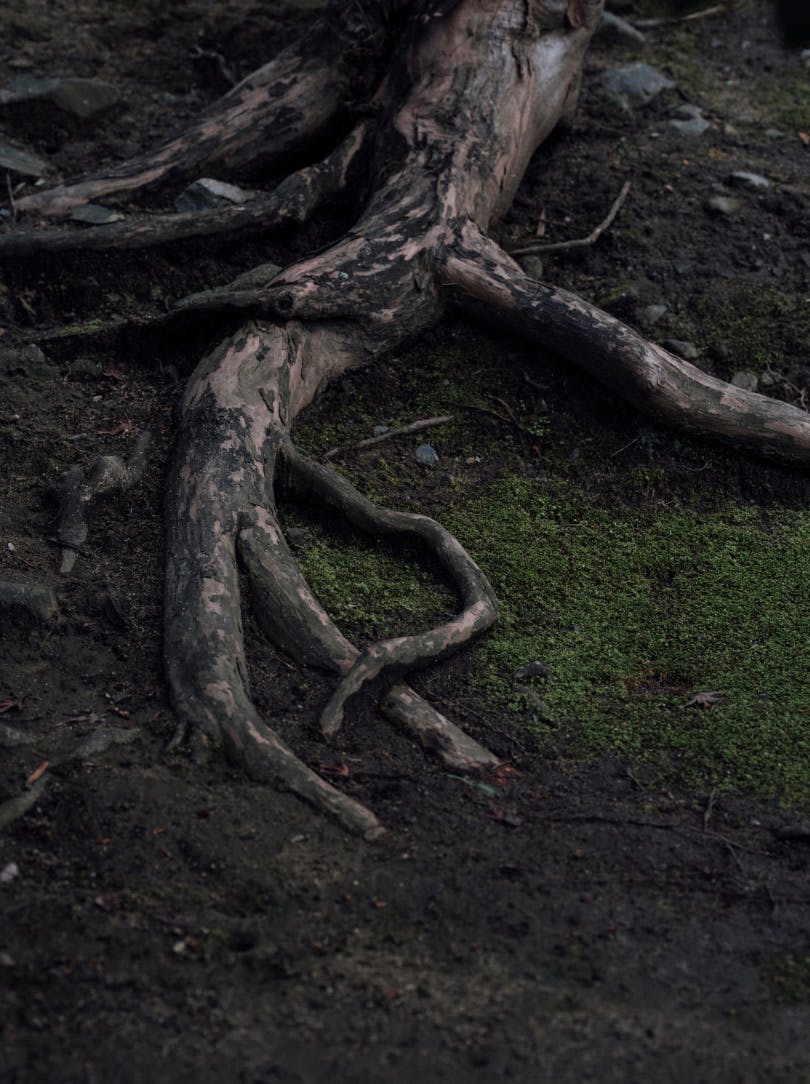
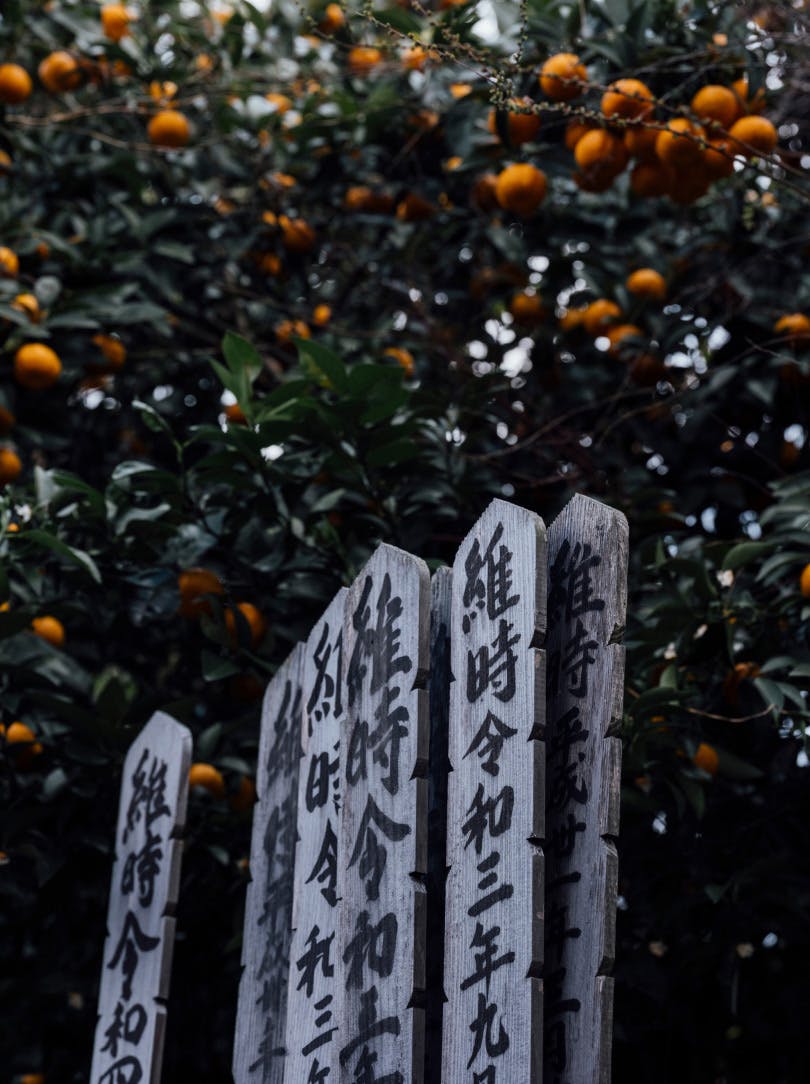
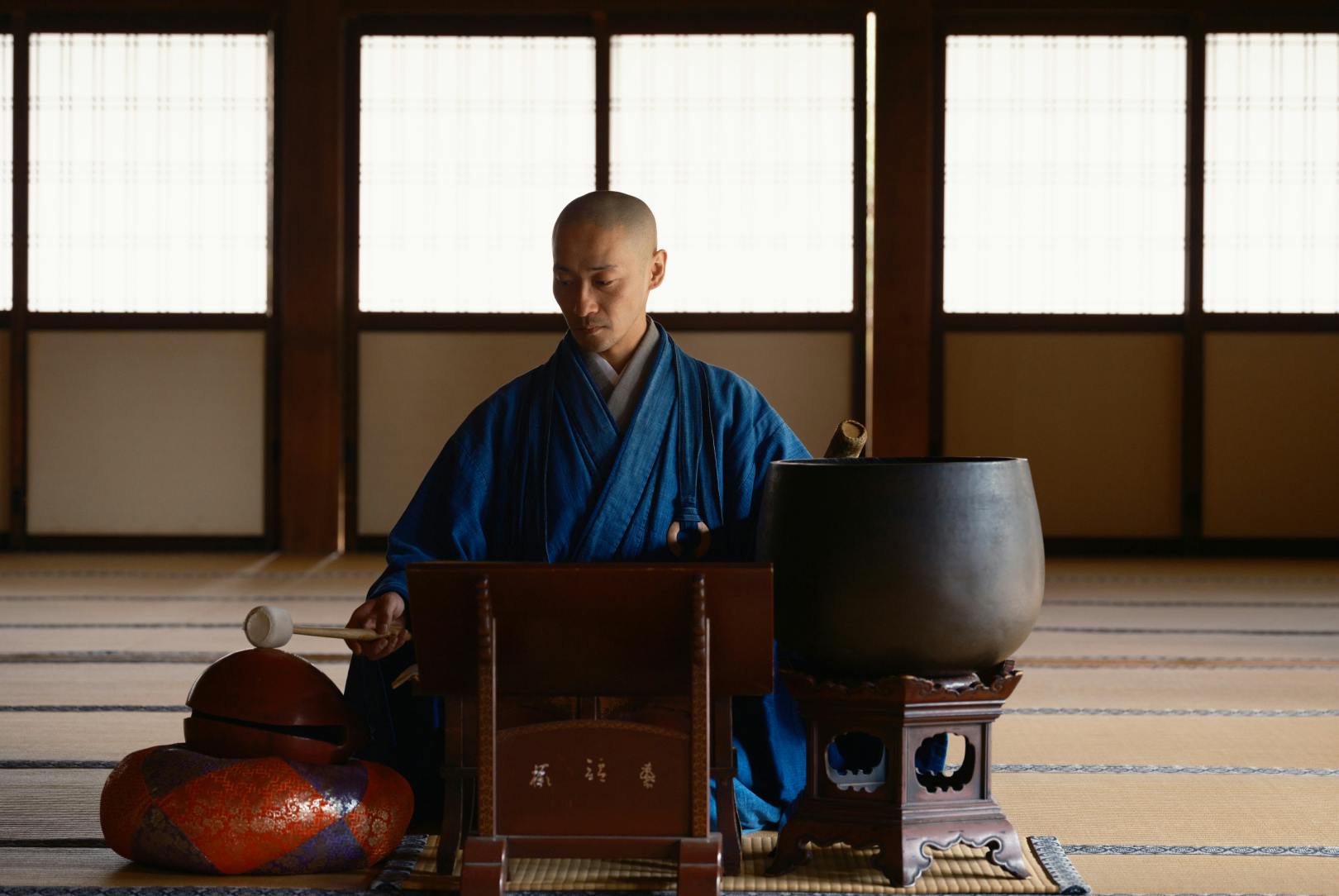
He continues: “The reason why I thought it made sense to become a Zen monk was because after many years working with craftsmen, I realised that their philosophy was Zen philosophy. There is a connection to the tea ceremony, ikebana, and all those masters. These philosophies are all based on Zen philosophy. I realised that everything starts with Zen. And so everything felt connected to what I was learning through working with craftsmen.”
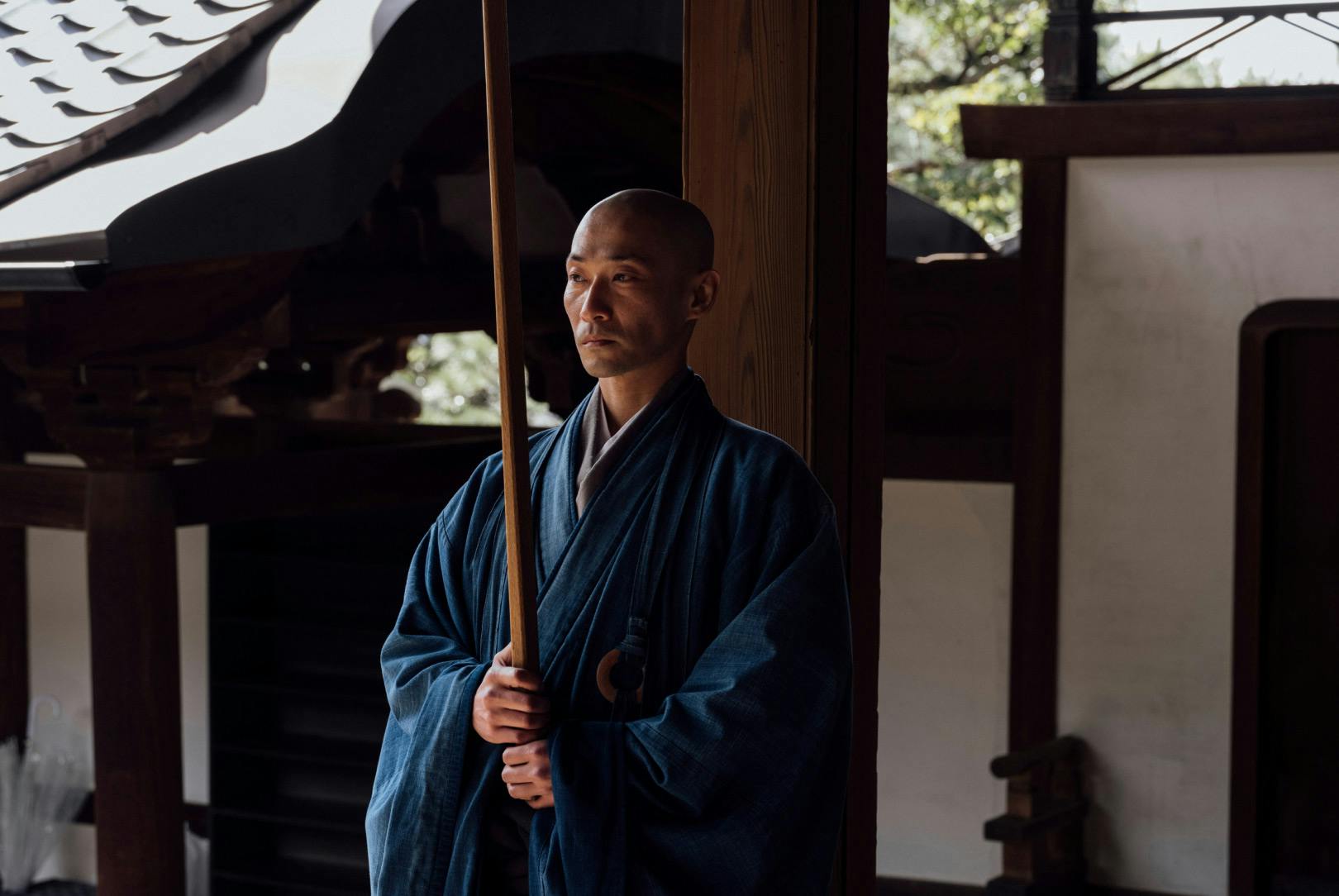
The moment Tosei decided to become a monk, a new life trajectory began. His transformation took time, patience and physical stamina, as he embarked on three years of rigorous monk training. What does monk training look like?, we ask curiously.
“During training, the lifestyle is really hard,” Tosei smiles. “Our daily routine is similar to that of most other people. It includes cooking, cleaning, and preparing baths, and in addition, chanting and meditation. However, we are required to do it all very quickly and perfectly. It’s very hard.”
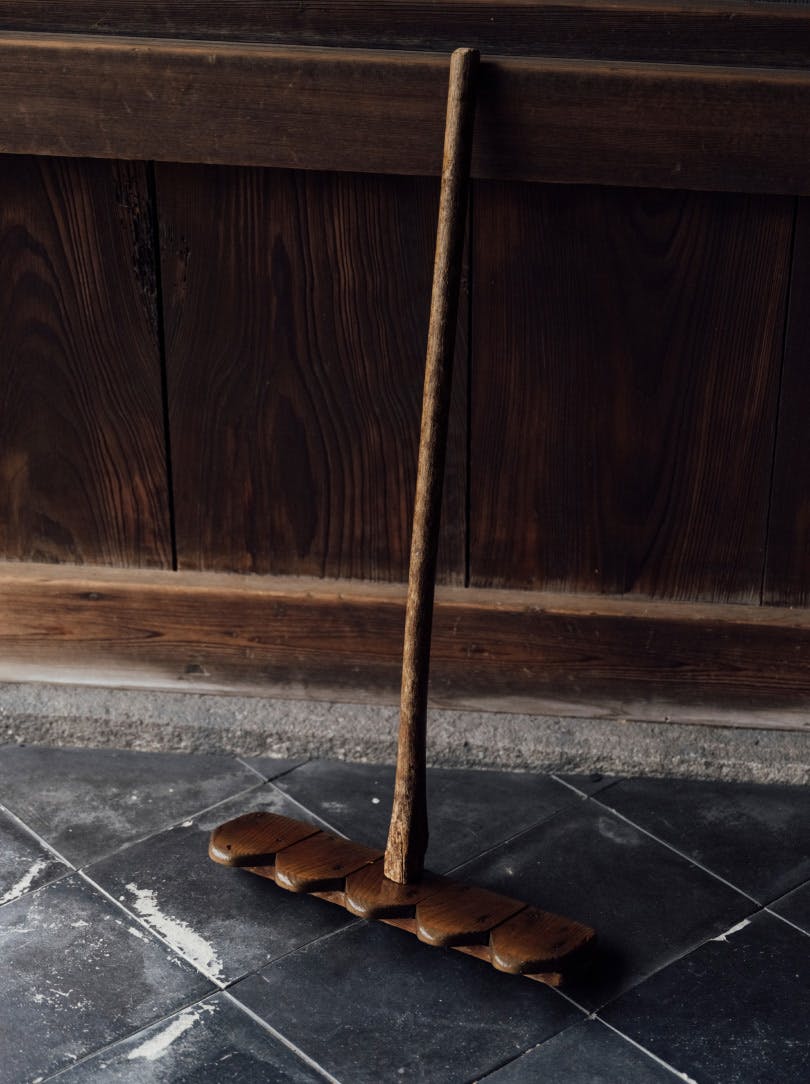
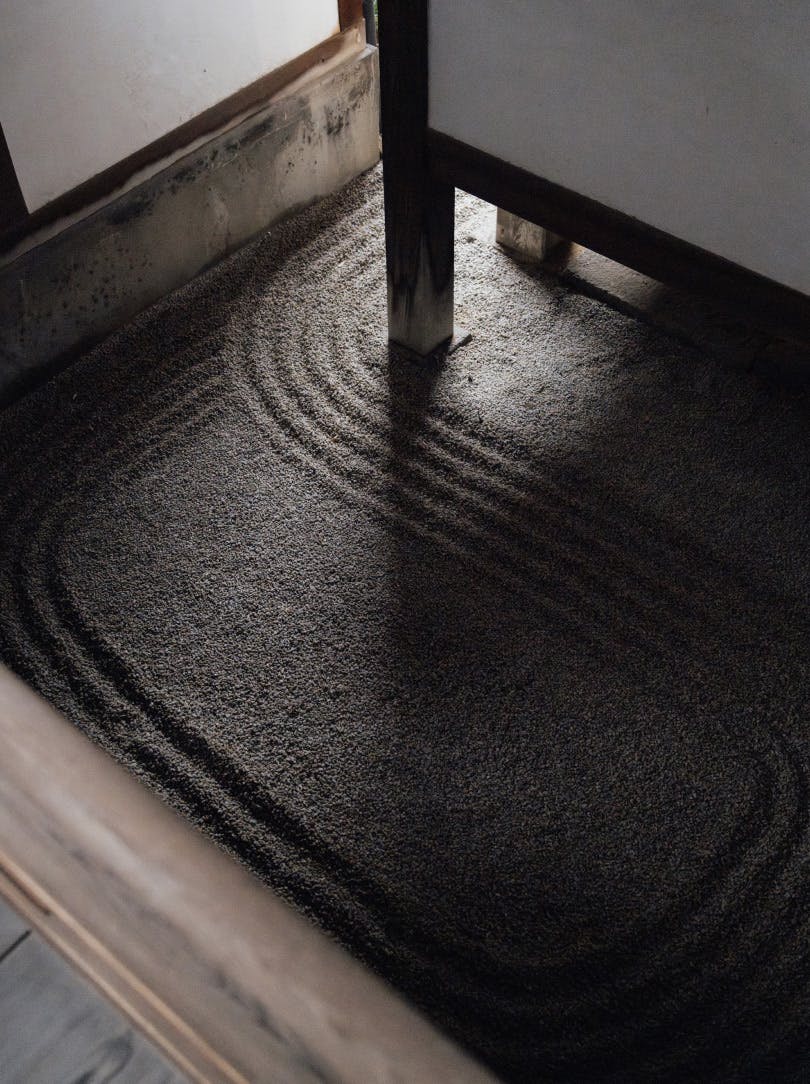
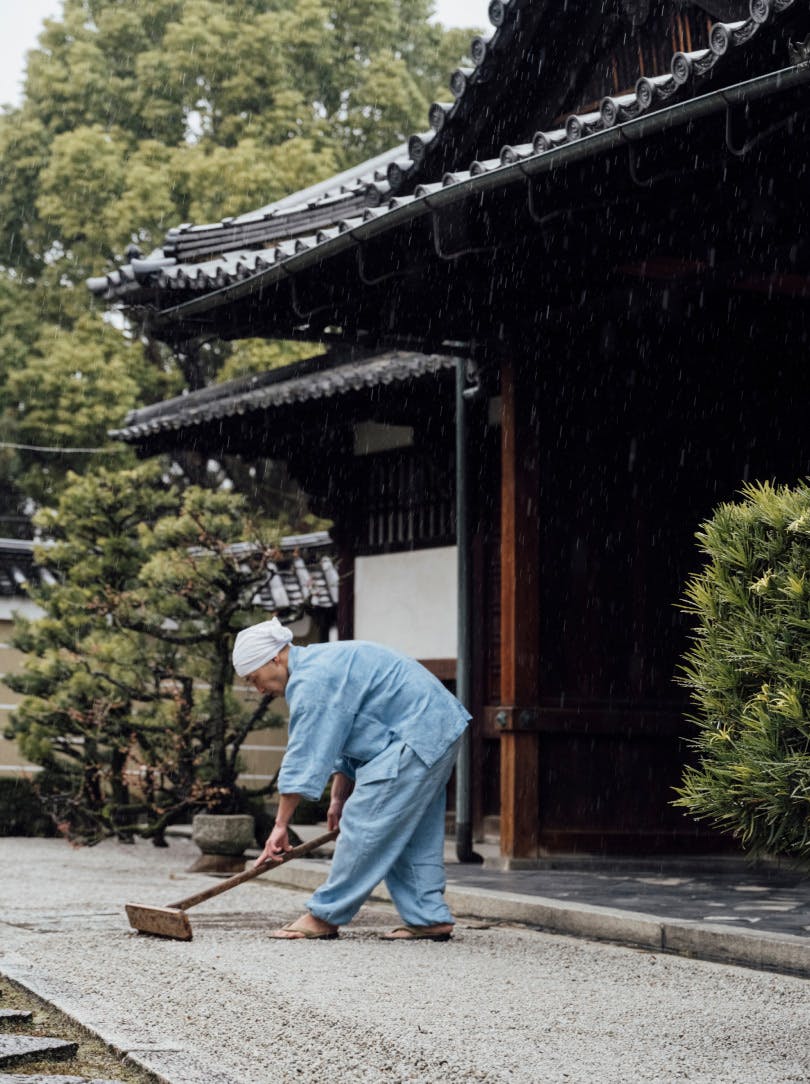
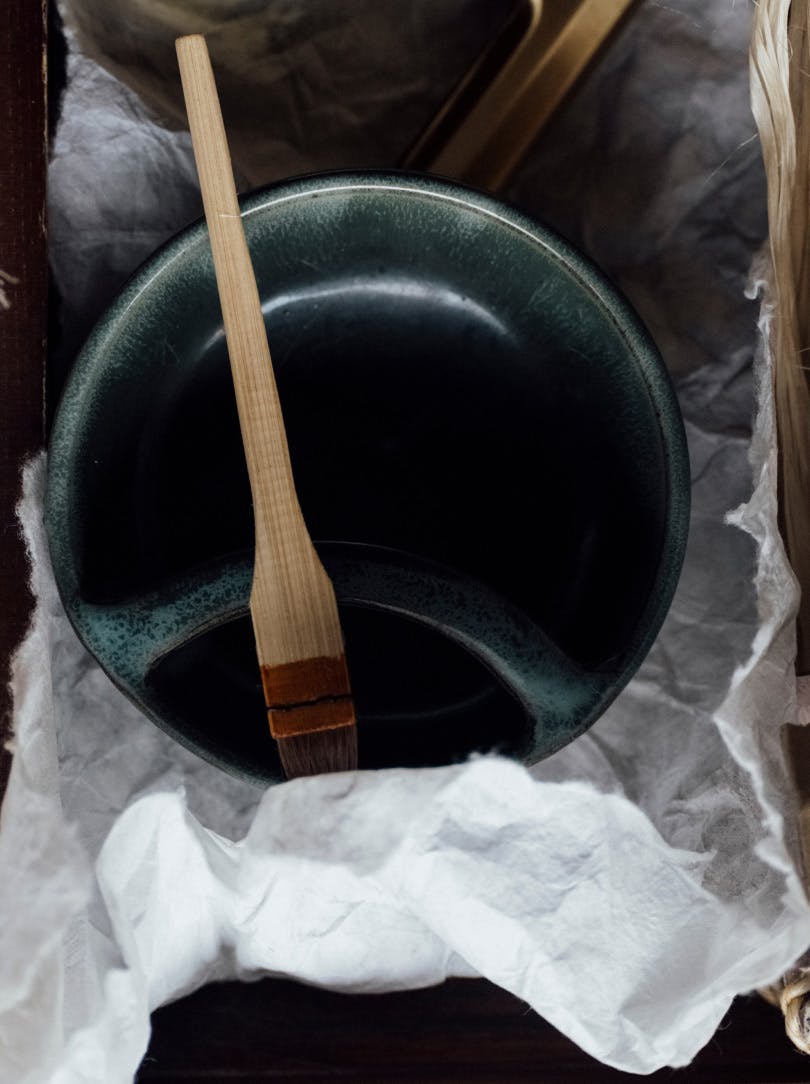
Gardening was one such example. Tosei’s eyes widen for a moment at the memory of his toils: “One of the hardest things was picking 1-mm blades of grass out of the moss garden in hot summer weather. It was all done by hand, one by one. For ten hours a day, all summer long…”
Other tasks included cleaning every inch of floors, leaving no speck untouched, and meditatively raking the stones into the soothing lines, curves and waves synonymous with Zen Buddhist temple gardens, mindfully taking care to ensure every single tiny white piece was in the perfect position. Today, Tosei still carries these practices within him; earlier, we witnessed him implementing all of them in perfection at the temple, from cleaning the floor in quick, rhythmic strokes to raking the stones, with movements that balanced grace and ease with a meticulous efficiency.
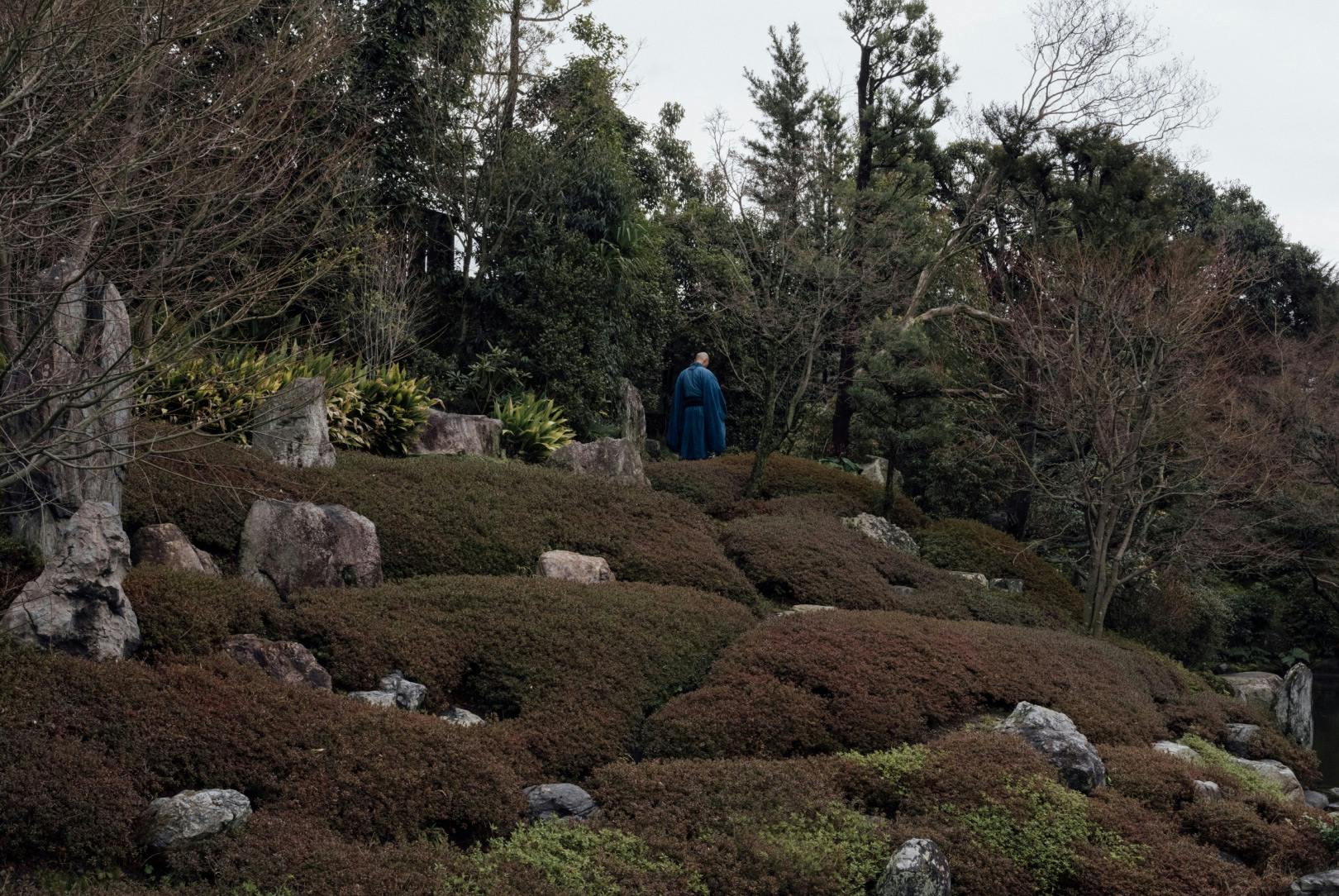
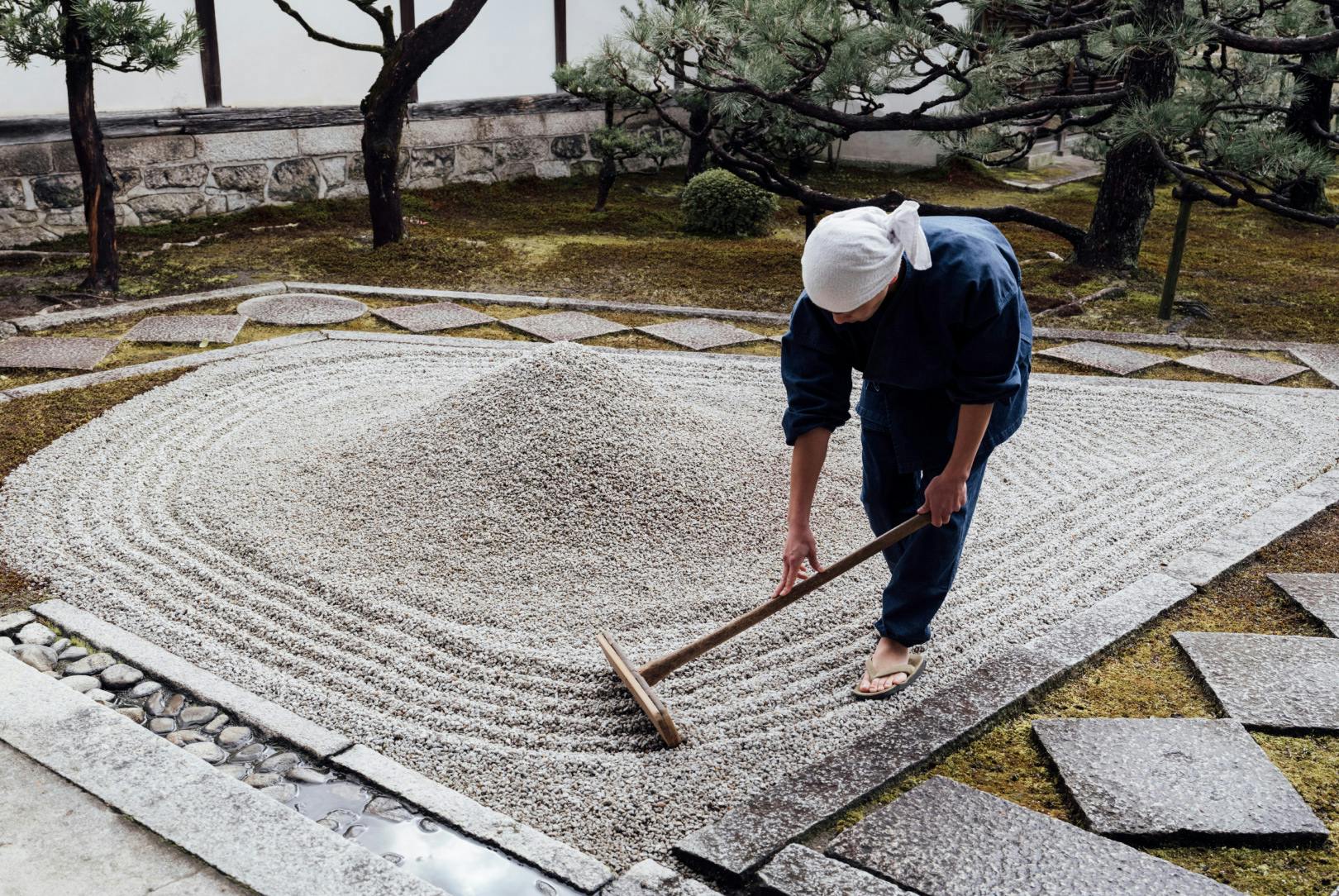
The training left its mark not only physically and mentally, with his body getting stronger and a higher tolerance to stress – but also in terms of his outlook on human existence.
“When you walk into a room, you see it in a completely different way,” Tosei explains. “You see what’s behind everything. For example, when I see a garden, I see the maintenance, how much work has gone into it. When I see an object, I see why this product has a particular shape. You see so much more – you see not just the surface, but everything. That is how you see things now. Your perception completely changes.”
After becoming a monk, Tosei began teaching a type of Zen meditation which is seated and mindfulness-focused, known as ‘Zazen’ meditation, both at Ryosokuin and online.
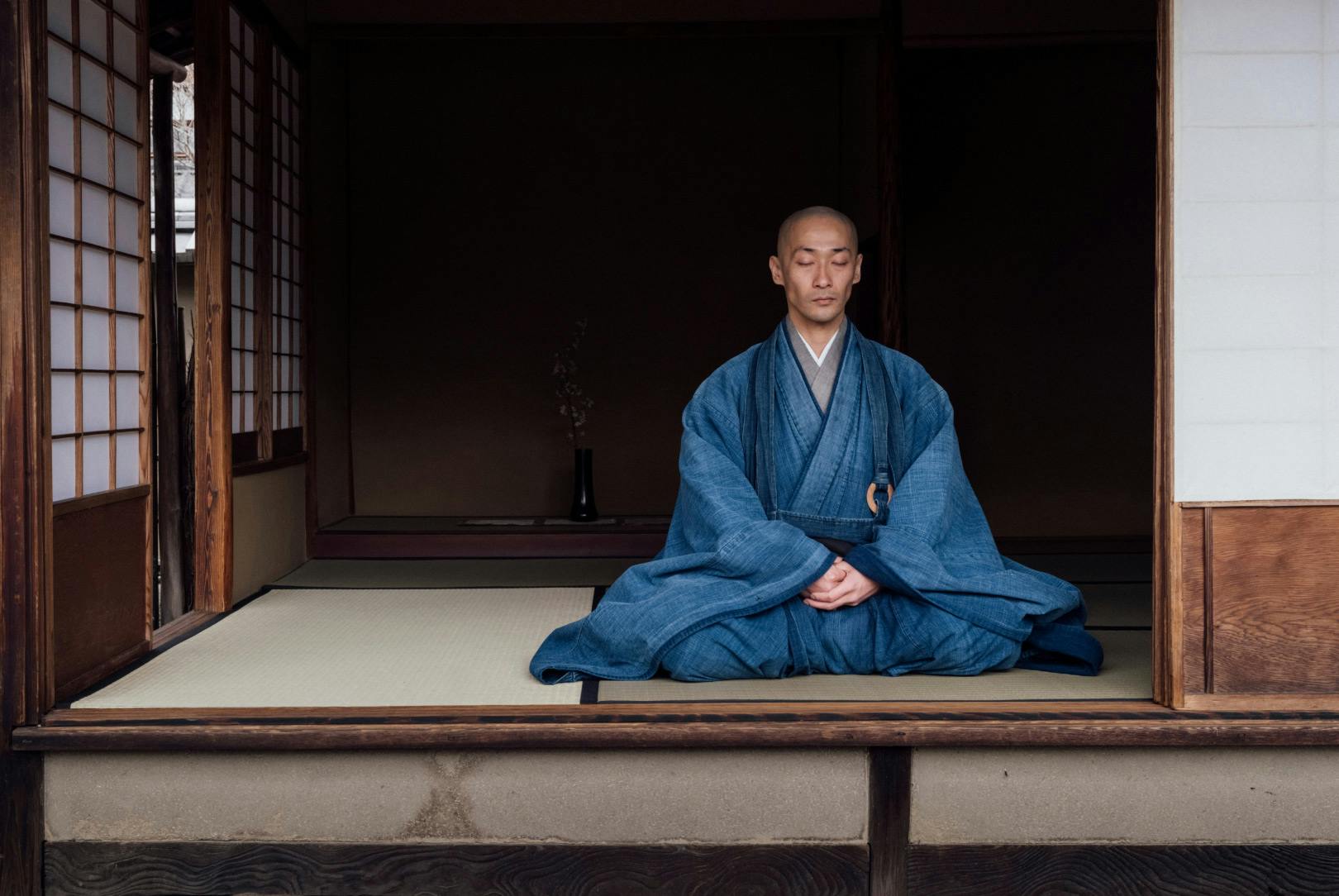
“The main thing I do as a monk is teach people Zazen meditation,” he says. “This is because it can be done anywhere. You just have to sit still – anyone can do it. It’s not telling people that you have to believe in anything, so there’s no conflict with other religions or beliefs. It leads to a transformation in the way you observe yourself and others. You realise your own unconsciousness and start to observe it through meditation.”
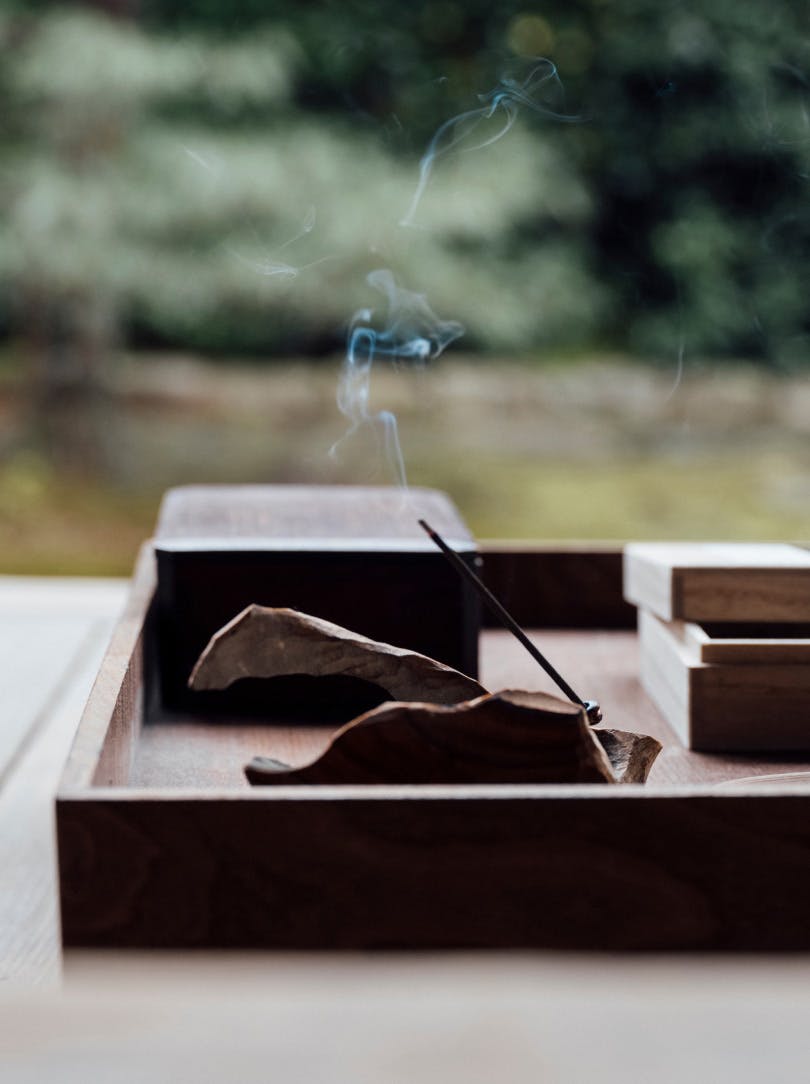
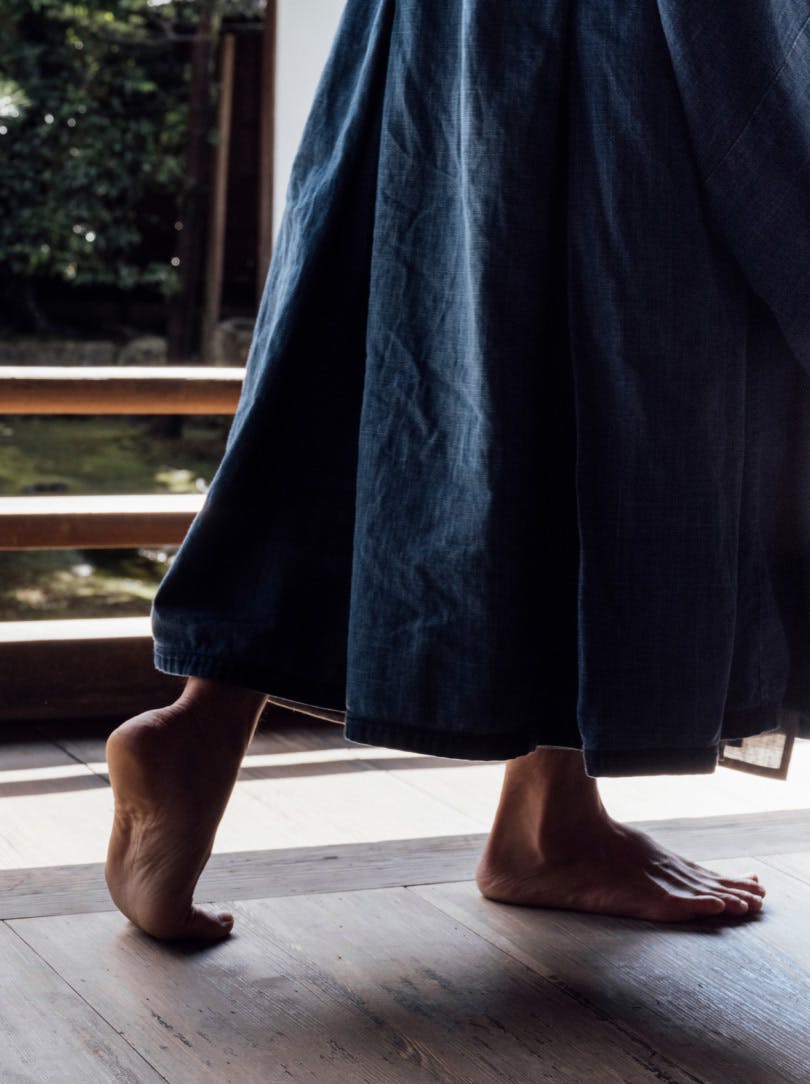
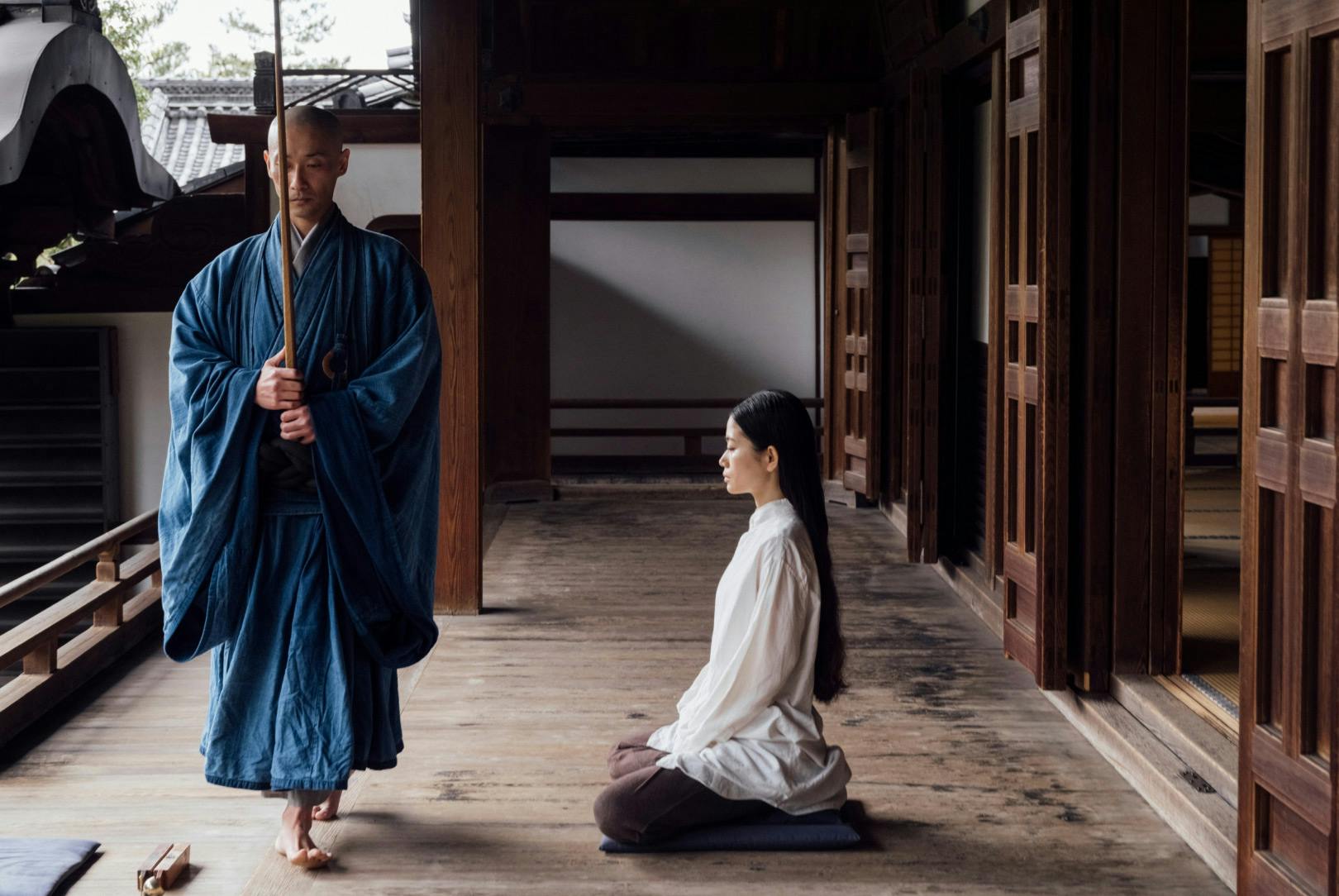
When Tosei teaches, he typically sits cross-legged on a floor cushion opposite his students in the temple. As busy minds start to settle, he gently urges them to become aware of all their senses, from every single sound in the air and the sensation of the wind to the layered scent of incense. This sensory awareness is the gateway to exploring the world of Zazen meditation.
“I believe that after practising this meditation, because you observe really subtle changes, you reach a point where the outside and your inner self become one. There is no difference, no boundary. It’s all one. By doing Zazen you can experience it for yourself.”
“Having been teaching people the Zazen way of thinking and philosophy, I thought, how can I express that with a physical object?”
Tosei’s demeanour certainly reflects a monk-like calm. He speaks steadily and patiently throughout our conversation, exuding an aura of grounded peacefulness, making us feel a deep sense of equilibrium simply be sitting near him. It was from the seed of Zazen meditation that Tosei’s interest in ‘za kekkai’ grew – more precisely, a desire to transform the elemental Zen concepts into a physical form. “Since ancient time, Japanese people have believed that nature is a god and striven to live in harmony with it,” he says. “Nature and I are one. Nature is god and spirituality. This is the same way of thinking as Zen.”
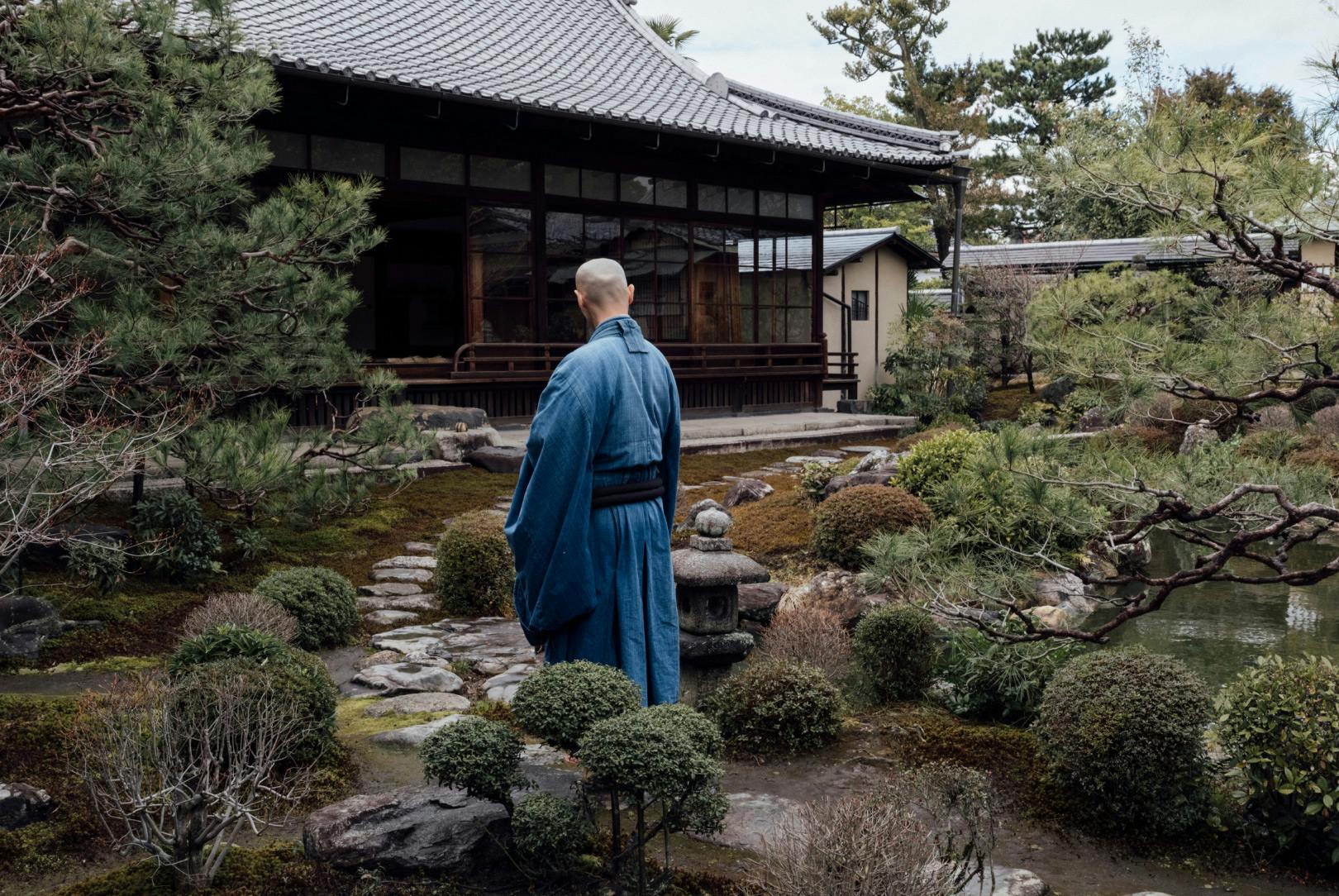
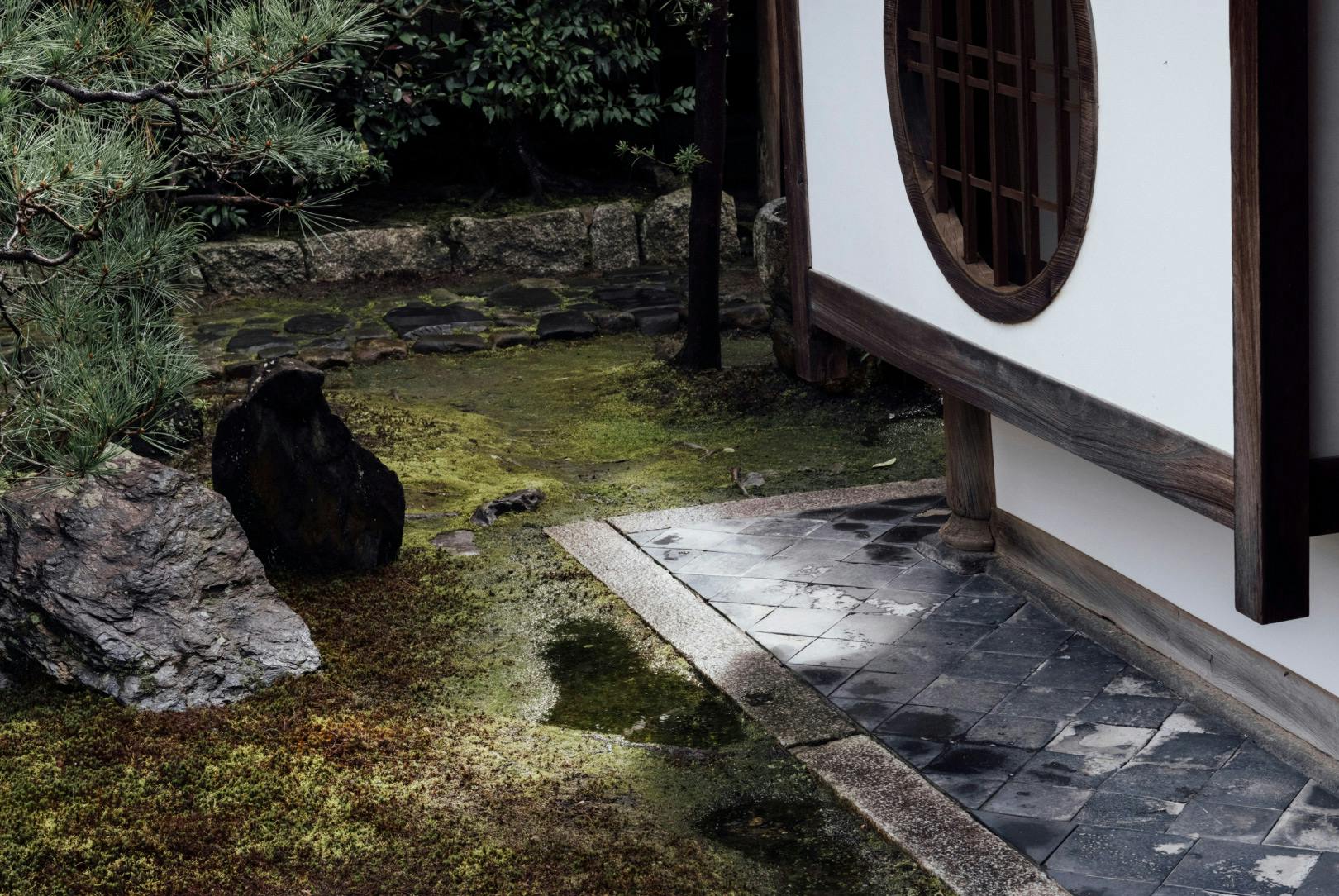
“Having been teaching people the Zazen way of thinking and philosophy, I thought, how can I express that with a physical object? Not just through meditation, but through something physical. That was how it began with kekkai seki stones.”
For Tosei, these simple hemp-wrapped stones ultimately represent the exploration – and dissolution – of boundaries, or kekkai. “It’s just a stone with a rope,” says Tosei, who first learnt how to make them while gardening at the temple. “These tell people not to enter. It makes people stop, and when you stop, you look around. It lets people know there is a boundary, physically and mentally.”
This was certainly the case when we first encountered his stones this morning, sitting quietly on the wooden tray. As the sound of rain filled the chill air, there was a long pause as our eyes quietly settled on the surface of their soothingly organic forms, textures and tones, a microcosm of surface details shifting into deeper focus as the seconds passed.
Highlighting the apparent duality between boundaries and oneness, Tosei adds: “In Zen philosophy, the world and self are one. A kekkai is the complete opposite – it separates things. But when you look at a kekkai seki, its rope is not forever. If you leave it outside, after many years it will just disintegrate and go back into the soil. The stone will go back to being just a stone. This boundary is not forever – it’s only temporary.”
It’s one of many times in our conversation that Tosei’s words linger comfortably in the silence that follows, as our minds slowly process the depth, beauty and timeless profundity of his observations.
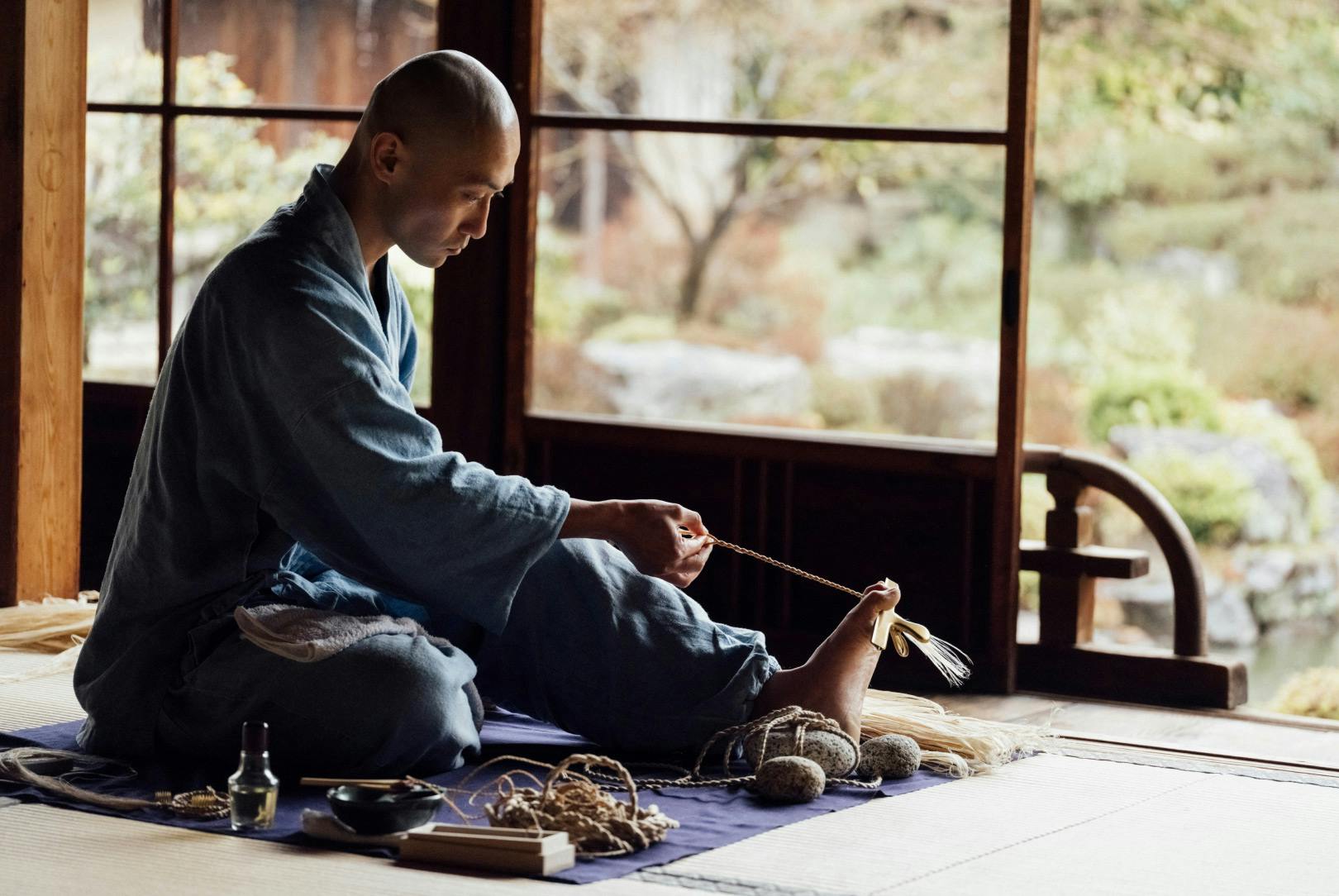
This idea of impermanence, rooted in Zen Buddhism, has long imbued the essence of Japanese culture – from the wabi sabi aesthetic of ceramics to the paper, earth and wood materials used in homes and tea rooms.
And these stones are a further example. Just like the youngest heads of centuries-old Kyoto textile families and lacquerware makers who innovate in order to keep their craft alive, Tosei’s stones balance the past with the present, particularly in terms of being used freely by people around the world, outside the confines of temples or tea gardens. “You can put them anywhere,” he says. “On the corner of your desk. By the entrance. Or by some flowers.”
We take one of the stones into our hands. We feel its solid weight, sense the organic strength of the hemp, and ponder its age. What a beautiful object, we think, shaped by time and nature’s forces. And we wonder, where would we place it in our home?
The making process is both simple and firmly rooted in the natural world. First, Tosei visits Awajishima, a pristine, near-sacred island that plays a key role in Japan’s mythology, encircled by the blue waters of the Seto Inland Sea.
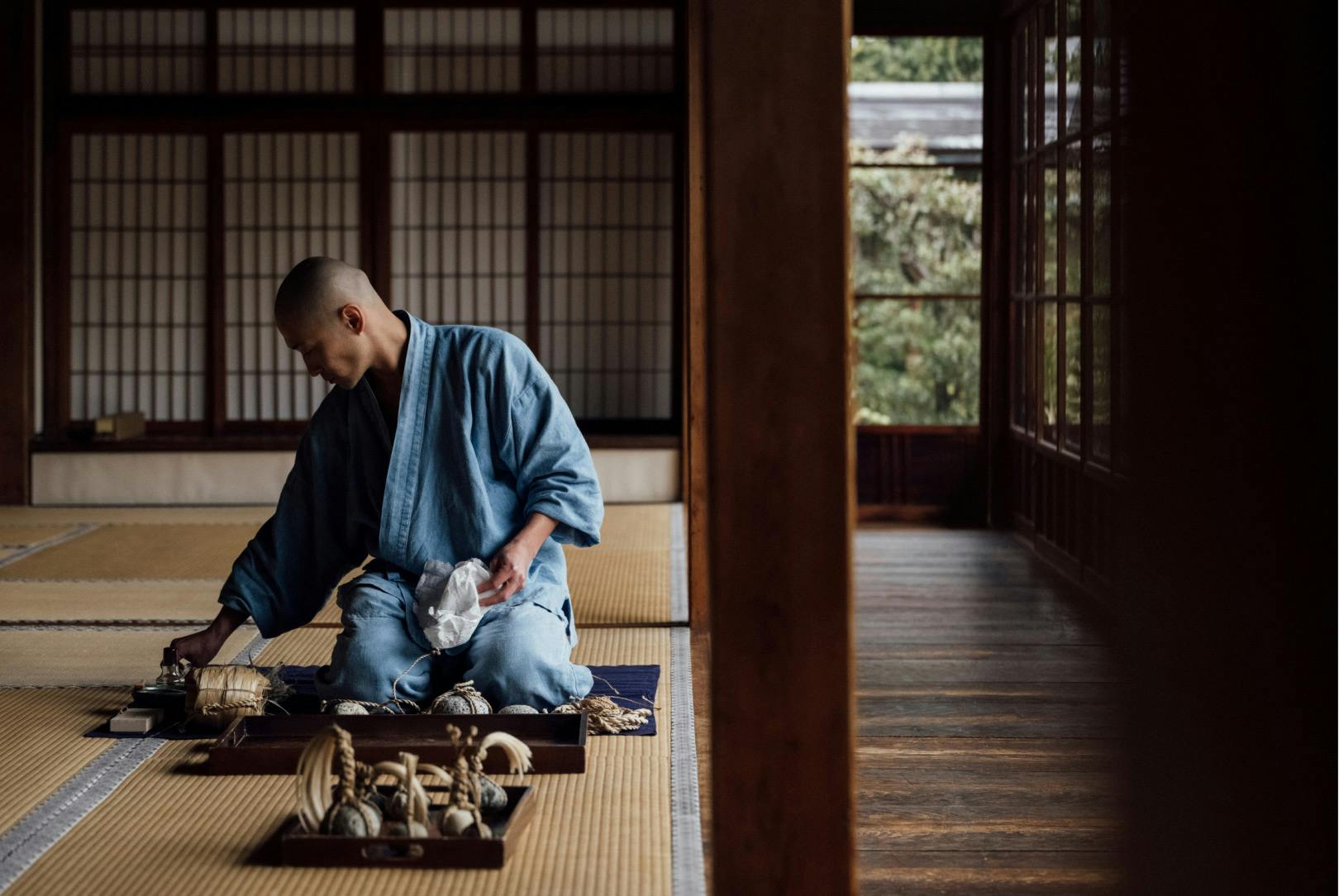
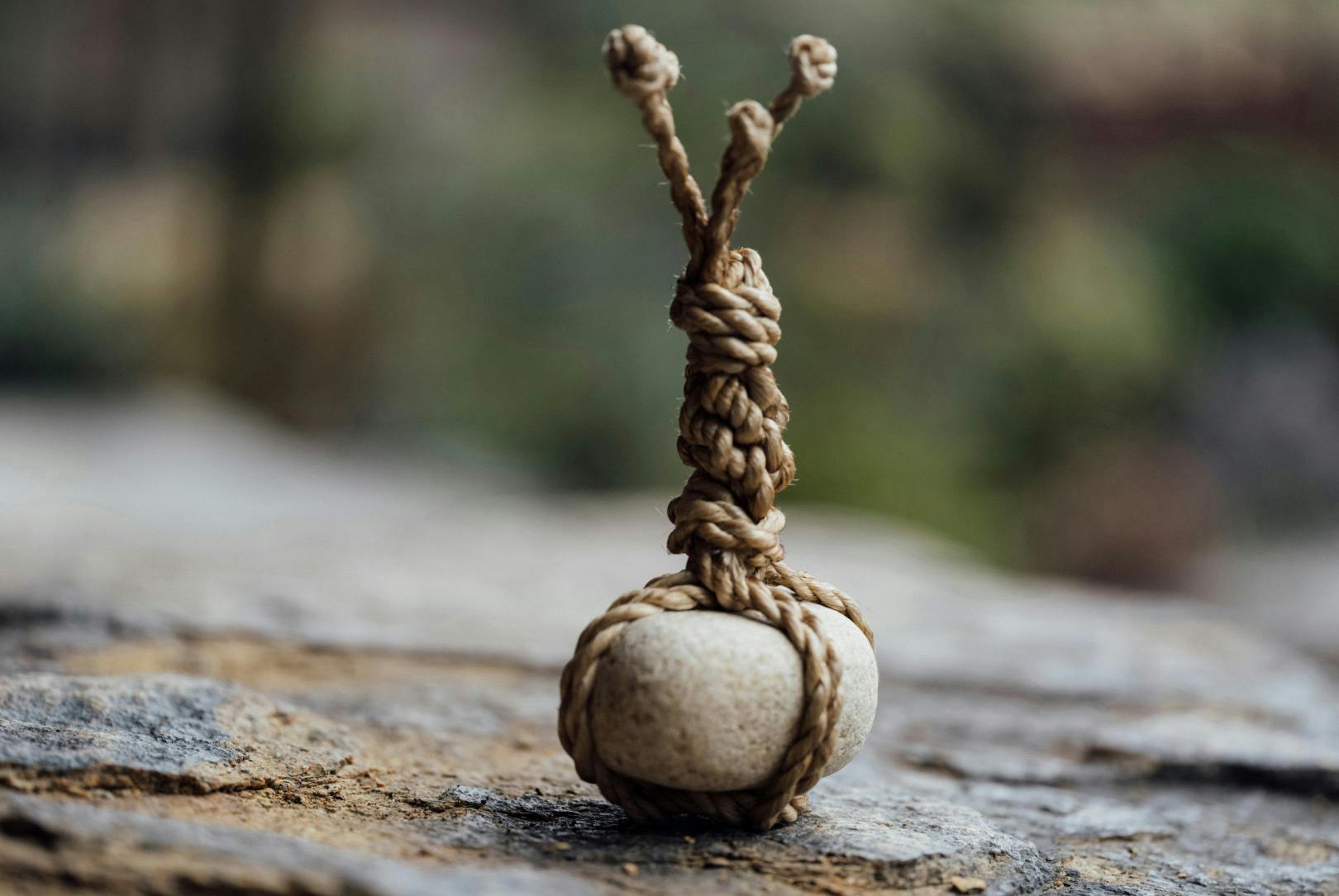
“I go to Awajishima and pick the stones from mountains, rivers, seas,” he says. Why Awajishima?, we ask. “Awajishima is known as the birthplace of Japan, according to mythology. I want to teach people about the spirit of Japan. I want them to have a piece of Japan. I pick each stone myself, based only on my feeling that it will be beautiful when tied with a hemp rope. It’s just my intuition.”
“We need to go back to our roots. Can you imagine not eating rice anymore? Forgetting hemp is like that.”
The rope is tethered no less tightly to the spirit of Japan. While many gardeners today use a simple black string, Tosei chose the traditional light-coloured ‘taima’ hemp. This same material is traditionally used to make ‘shimenawa’, the sacred ropes used at Ise Jingu, Japan’s most important shrine, and the ‘yokozuna’ rope that distinguishes the highest-ranking of the nation’s sumo wrestlers.
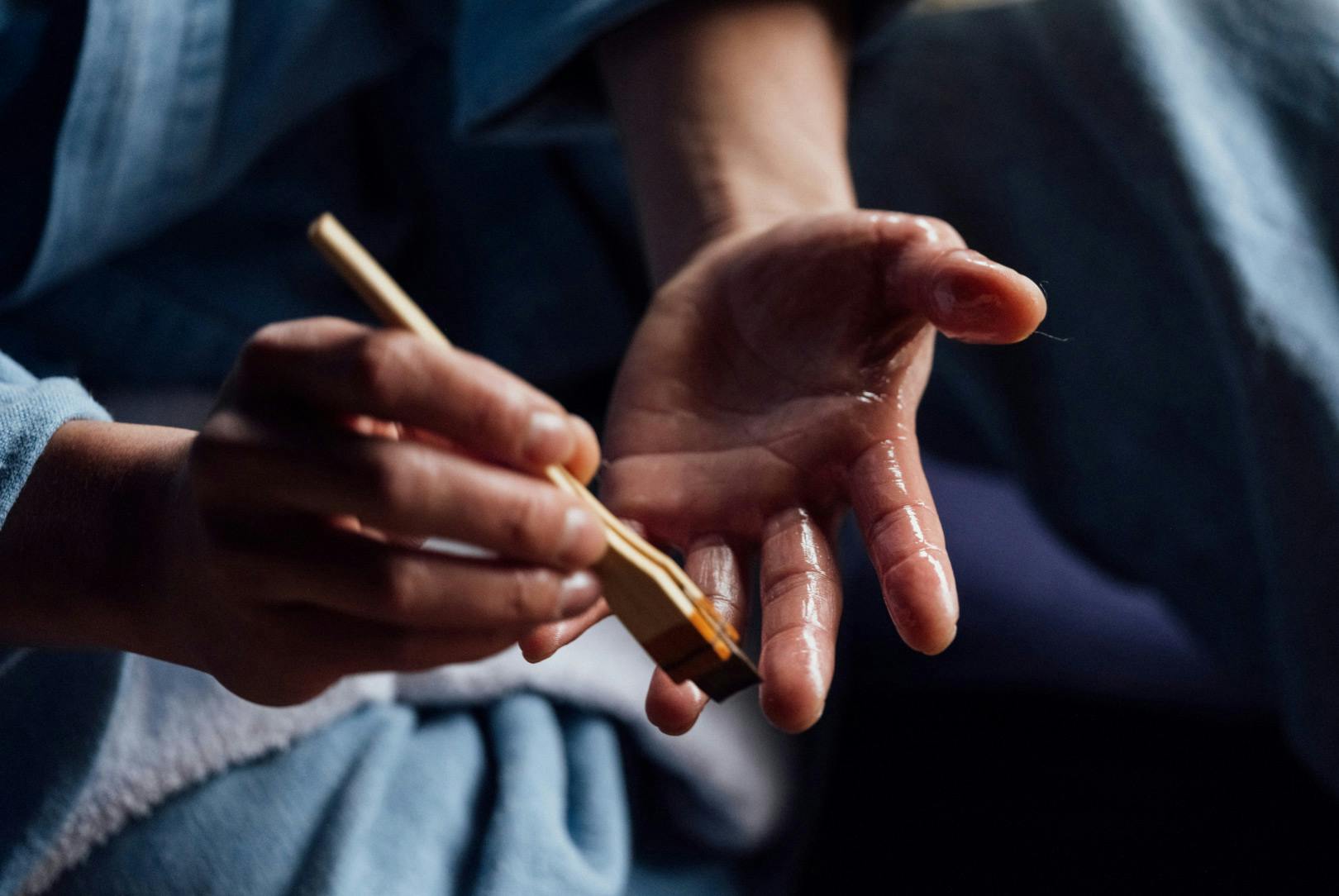
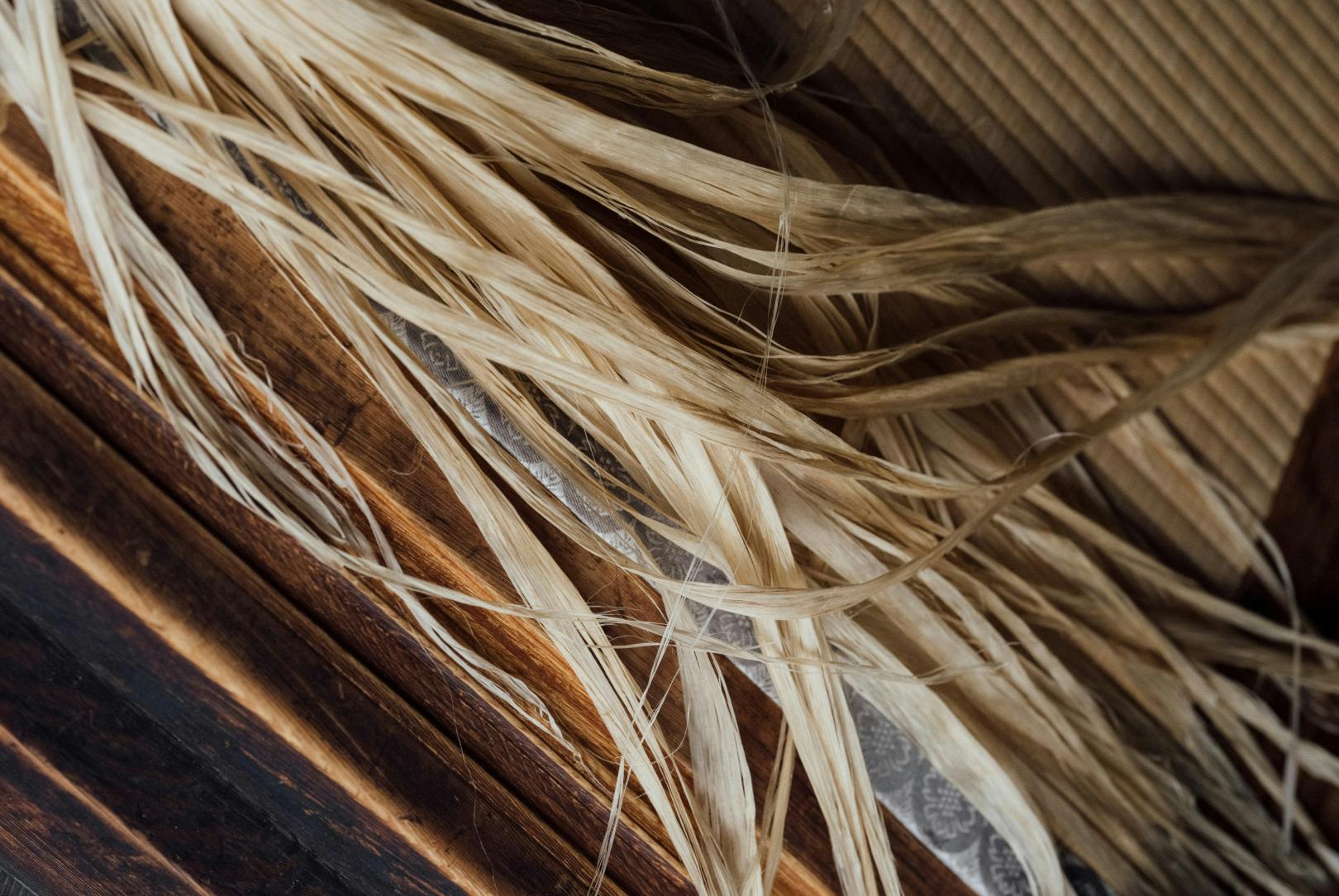
“If you go back 10,000 years to the Jomon era, we were planting it and using it,” Tosei explains. “It’s the most suitable plant to grow on Japanese soil. Until cotton arrived a few hundred years ago, each family used to plant hemp and make and weave their own fabric for clothing. That’s why I chose this material.” He continues: “We need to go back to our roots. Can you imagine not eating rice anymore? Forgetting hemp is like that. We used to wear it every day but Japanese people have forgotten this.”
And then the making begins. In the stillness of the temple in Kyoto, Tosei lays down his cloth, tools and materials – and starts creating a ‘kekkai seki’ before our eyes.
“There’s no specific setting,” he says. “I just need space for a furoshiki. The materials are simple and the objects are simple.” He slowly moves through the process – clipping, threading, trimming, tying – focusing his attention unwaveringly on the mindfulness of each making moment. Witnessing this process feels as deeply peaceful as meditating itself, as our eyes follow the quiet movements of his hands moving steadily through each step.
It can take up to three hours to complete a single ‘kekkai seki’, depending on the stone and rope size. “First, I spread out the furoshiki – about 1m by 1m – and I put down my little scissors and materials and camellia oil,” Tosei explains. “I normally tie the rope first, and once it’s done, I burn it with a little candle, to get rid of the small strands and make it clean. Then I tie it around the stone. For the final design, I just look at the balance of the stone and then I finish it.”
Explaining further, he goes on: “This action of tying the rope is a simple process. When you do it for many hours, you concentrate so much, you have the feeling that you are at one with the rope itself.”
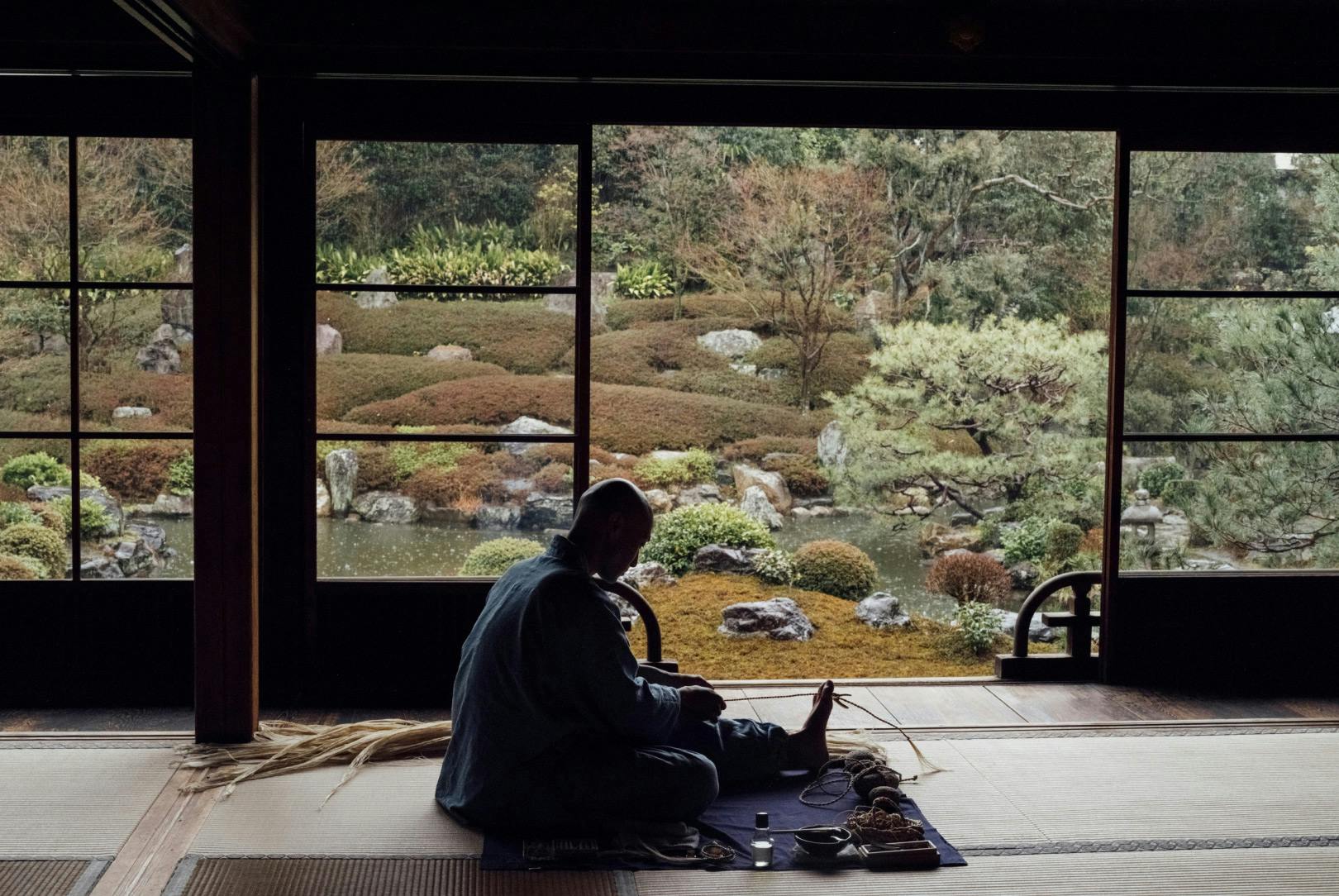
The rain continues to fall as Tosei peacefully sits and makes. It feels like a safe and sacred sanctuary. We are surrounded not only by the historic stories etched into the structural form of the temple, but beyond that, the deep, rich layers of Kyoto’s culture-rich urban tableau, around which flows an ancient circle of mountains – the city’s very own kekkai borders.
The city is a key protagonist, entwined with the spirit of Zen Buddhism, the temples, the craftsmanship, the stones – and Tosei’s own life path.
“I want everyone to be free. This is my message with these stones.”
“Kyoto has such a long history, with so many old things still here,” he reflects. “For old things to survive in our daily life, it means that they have been transformed by time and people’s ways of living. Always transforming and innovating. This is also applied to philosophy and religion and the way of thinking – shrines, temples are still here because they are innovating and transforming with time. This is the beauty of Kyoto – and this is what inspires me.” His creations serve as a serene reminder in today’s fast-paced modern world to pause intentionally, be present in the moment and ultimately, find peace through meditation.
As his array of mindfully crafted ‘kekkai seki’ stones begins to make its way outside Kyoto and journey into the wider world, for those that encounter them, Tosei has a message that is as simple yet powerful as the stone and rope that define them.
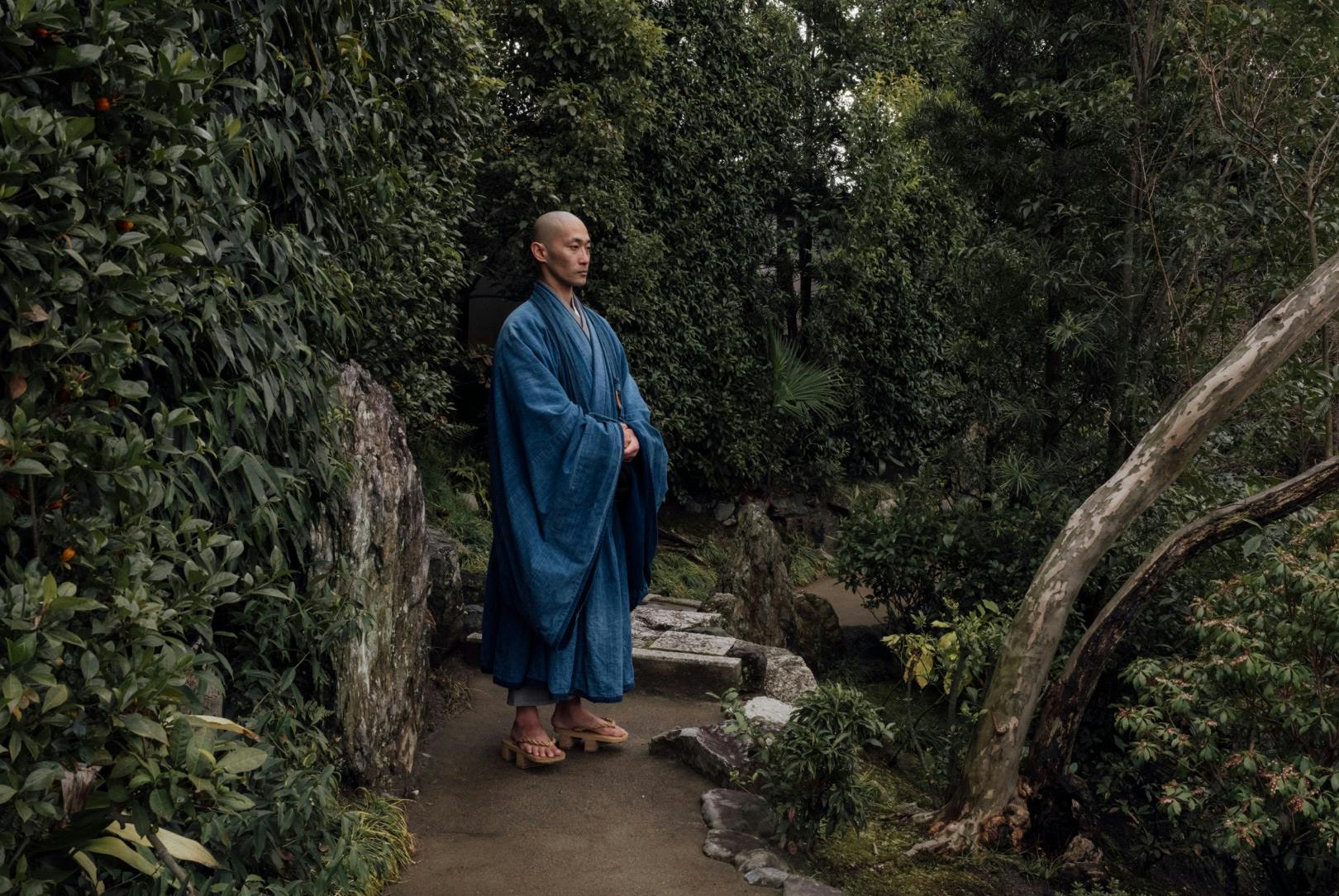
“Truly understanding that we humans are part of nature can be deeply liberating,” he says. “I want everyone to be free. This is my message with these stones. I want people to know and understand this – and set their minds free.”
